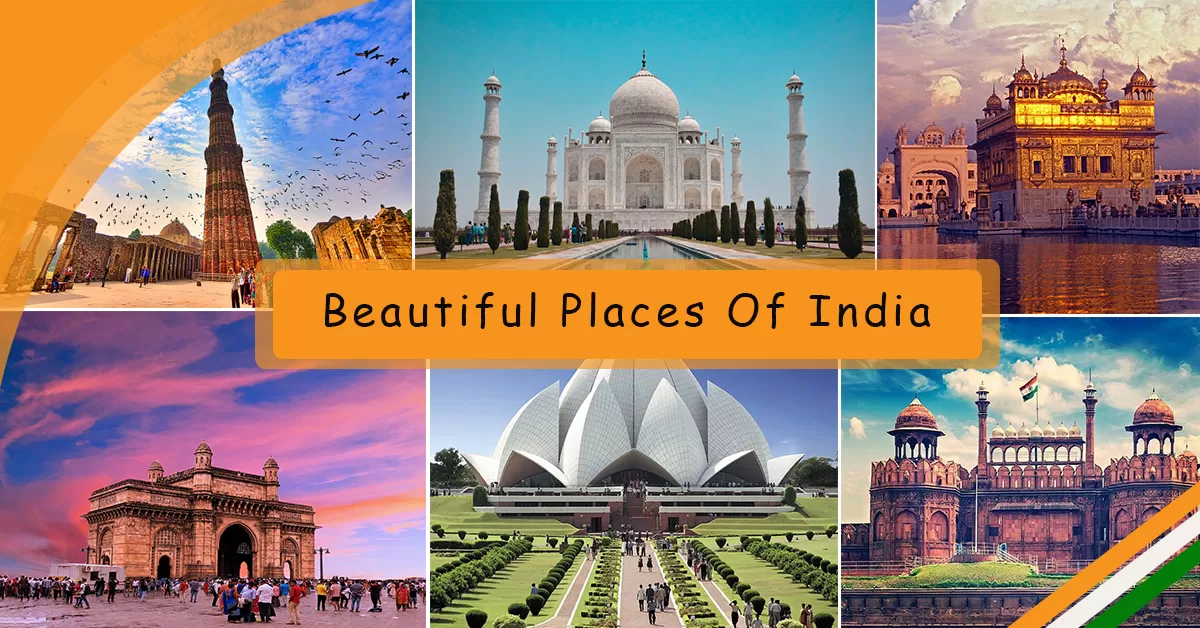Due to these ancient and top historical places in India, the previous era continues to be deeply ingrained in society. So go check out some of India’s most important historical sites if you love history or just want a taste of the country’s vibrant culture! See some of India’s most stunning locations and enjoy some mesmerizing sunset views. Check out this comprehensive list of India’s most significant historical sites, which was created specifically for you:
1. Taj Mahal, Agra
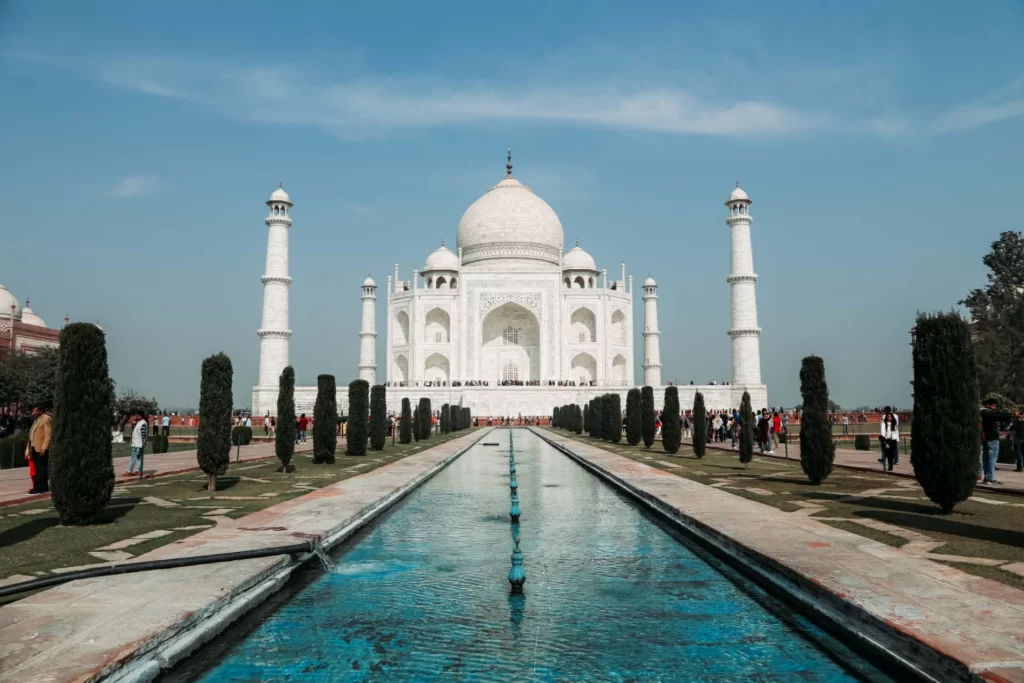
This picture is taken from: pexels.com
Learn about the Red Fort in Delhi, one of the well-known locations in India. Introducing the ruler of Indian historic l sites. The Taj Mahal will always be ranked highly on any list of the top 10 historical sites in India. Discover the Taj Mahal, the historical icon of love, whose magnificence has never been surpassed. This is one of the weekend getaways from Delhi nowadays. Shah Jahan ordered the construction of this lavish white marble building in 1632 in memory of his late wife Mumtaz Mahal. The construction of this majestic building, which is one of India’s most well-known historical sites, took about 22 years. Local lore holds that Shah Jahan amputated the hands of every worker who constructed the Taj Mahal in order to prevent the construction of another monument of its kind.
Interesting fact: In Dubai, a mall and hotel being built in the style of the Taj Mahal will be four times larger than usual.
Entrance fee: INR 40 for Indians; INR 1000 for foreigners
No admission for anyone under the age of 15
30 minutes prior to sunrise through 30 minutes prior to dusk
Must see: Taj Mahal nighttime performances
Construction: Shah Jahan
2. Agra Fort, Uttar Pradesh
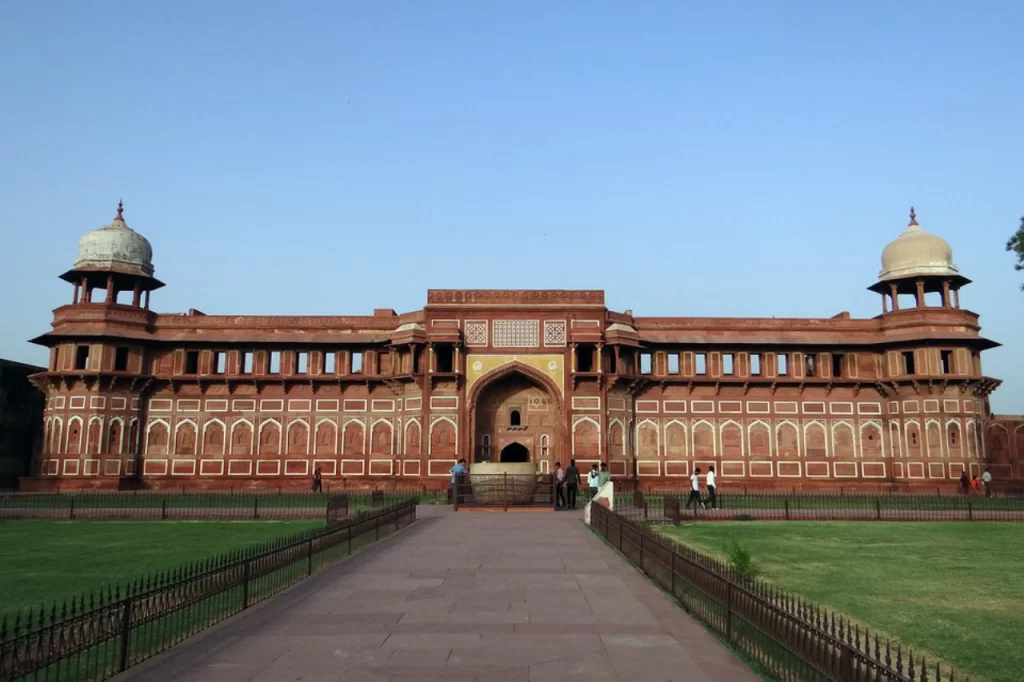
This picture is taken from: pixabay.com
Visit the walled royal Agra Fort, one of the well-known historical sites in India that are made completely of red sandstone, to get a taste of the rich history of the Mughal era. The Amar Singh Gate and the Delhi Gate are two ornately carved gates that are part of this famous Indian tourist destination that was built in 1565 by Akbar. You may only access the historic city through the Amar Singh Gate, which is dotted with gates, courts, corridors, palaces, and mosques. It is among the most stunning locations in Agra.
It’s a fun fact that this fort appeared in the Sherlock Holmes case “Sign of the Four” and served as the backdrop for the Jodha Akbar film.
Entrance fee: INR 40 for Indians
Foreigners: 550 INR
Open from 6 a.m. to 6 p.m.
Jahangir Palace, Nagina Masjid, Moti Masjid, Mina Masjid, and Zenana Mina Market are all must-see attractions.
Akbar and Shah Jahan constructed it.
3. Red Fort, Delhi
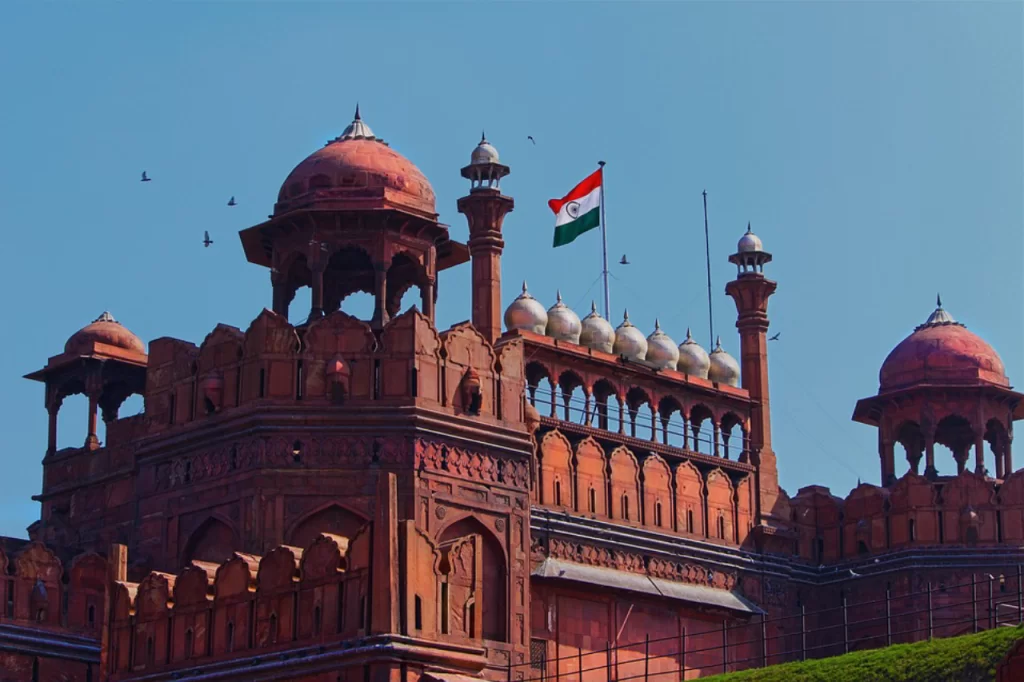
This picture is taken from pixabay.com
The Red Fort, one of India’s historically significant tourist destinations, was built between 1638 and 1648 over a ten-year period. When Shah Jahan moved the capital from Agra to Delhi, this fort was built, and it was known as the Qila-e-Mubarak. The President delivers his Independence Day speech at this octagonal fort, one of the most well-known historical sites in north India. One of the best historical sites in India is the Red fort, which is very amazing.
Interesting fact: Because limestone was used to build it, the Red fort appeared to be white. When the limestone started to break off, the British painted it crimson.
Entrance fee: INR 10 for Locals; INR 250 for foreigners
Open every day from 9:30 am until 4:30 pm (Closed on Mondays)
The Palace of Colors, also known as the “Rang Mahal,” was the residence of the emperor’s wives, mistresses, and attendants.
Construction: Shah Jahan
4. Qutub Minar, Delhi
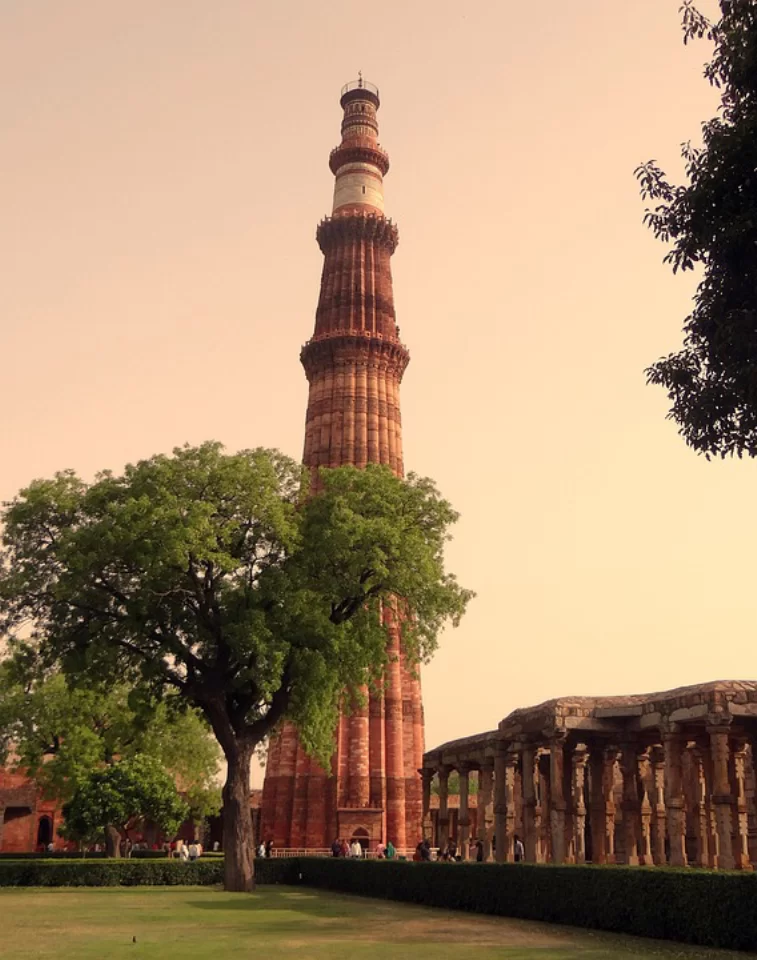
This picture is taken from: pixabay.com
The Qutub Minar is regarded as the location of the first Muslim state in northern India and is undoubtedly one of the most significant locations in the country. With its elaborate red sandstone stories, it is among the best representations of Indo-Muslim architecture. They are largely in Arabic and Nagari and are peppered with sculptures and Quranic phrases. One of India’s most well-known historical sites, Qutub Minar is credited with receiving its name from Qutb-ud-din Aibak, the country’s first Muslim emperor. At the base of the Qutub Minar is situated the Quwwat-ul-Islam Mosque, the country of India’s first mosque.
Interesting fact: A 2000-year-old iron pillar in the Qutub Minar complex has remained rust-free.
Entrance fee: INR 10 for Locals; INR 250 for foreigners
Open daily from 7 am to 5 pm
Must-sees include the Qutub Minar Festival, which takes place in October/November, and the Decorative Light Show, which runs from 6:30 to 8 p.m. every evening.
Qitub-ud-Din Aibak built it
5. Humayun’s Tomb, Delhi
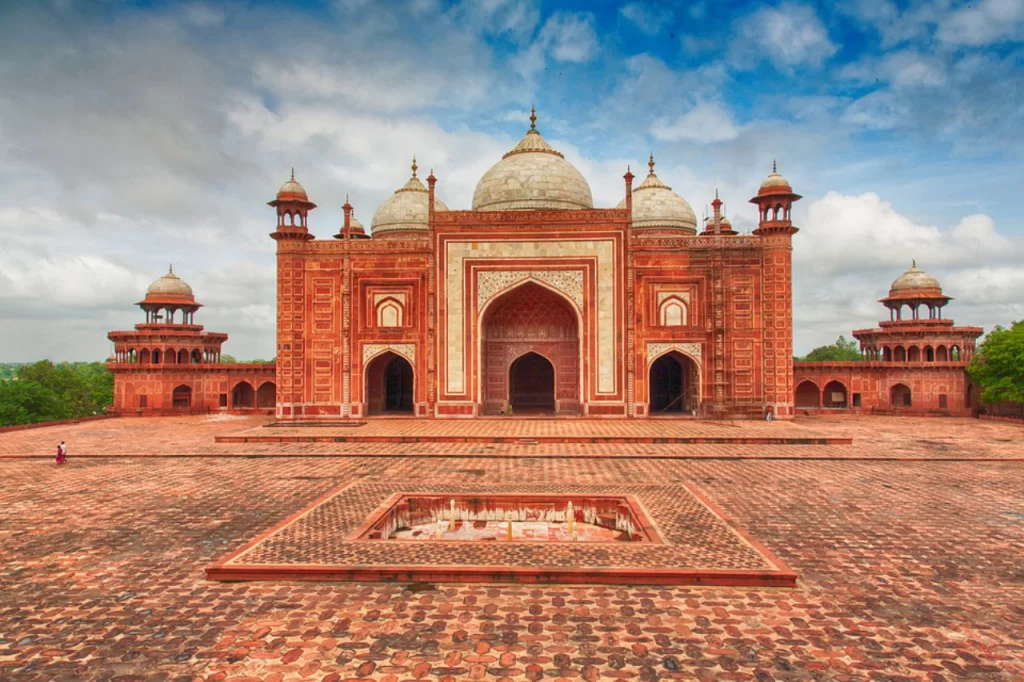
This picture is taken from: pixabay.com
Humayun’s Tomb, one of the most famous and significant locations in India, is a stunning fusion of Indian and Persian architecture. The construction of this monument for Humayun was ordered in the 15th century by his wife, Hamida Banu Begum. This monument is a masterpiece of Indian architecture because of its curved alcoves, stunning domes, ornate passageways, and kiosks. The southwesterly side of the main tomb also has a barber’s tomb. It is undoubtedly one of the most well-known tourist destinations in Delhi and deserves a visit.
Interesting fact: The Taj Mahal was largely inspired by Humayun’s Tomb.
Entrance fee: INR 40 for Indians and INR 510 for foreigners
Open daily from 7 am to 7 pm (Closed on Fridays)
A must-see is “The Dormitory of the Mughals,” which has more than 100 emperors’ tombs.
Mirak Mirza Ghiyath constructed it.
Founded in 1572
6. Fatehpuri Sikri, Uttar Pradesh
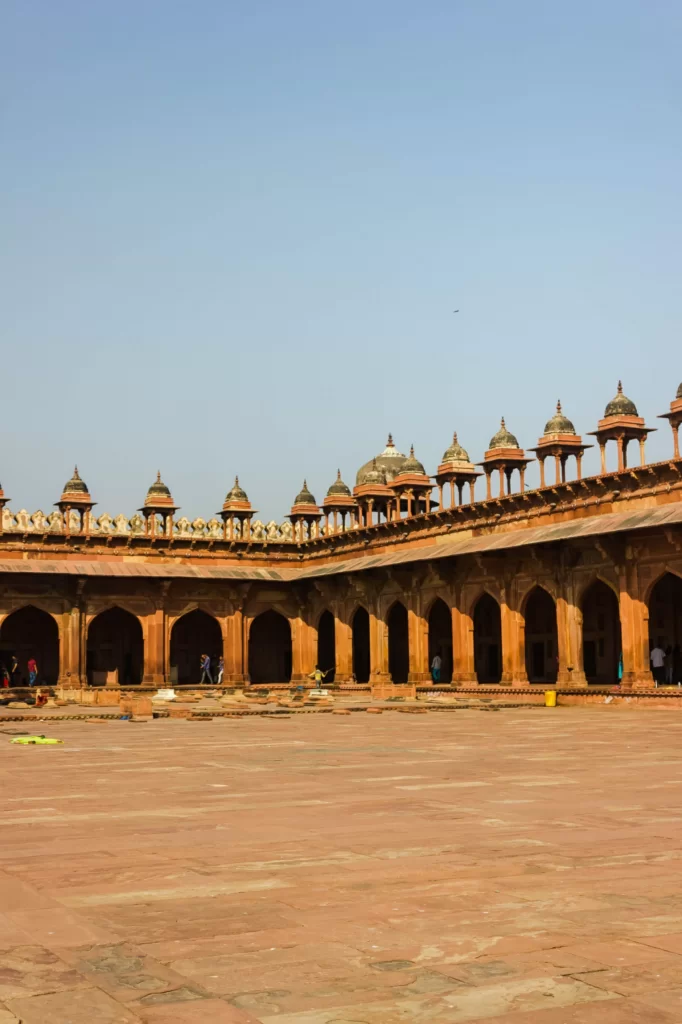
This picture is taken from: pixels.com
When Akbar was in power, Fatehpur Sikri served as the Mughal Empire’s capital. One of India’s historical tourist destinations, this regal city originally had palaces, civic structures, mosques, and living quarters for the king, his army, and his servants. Moreover, a well-designed royal metropolis with carved columns and ornamented pillars was constructed between 1571 and 1573 AD but was later abandoned due to water scarcity.
Fascinating fact: Several infertile ladies visited the grave of Sufi saint Salim Chisti to offer prayers for conception.
Entrance cost: Westerners pay INR 510; Indians pay INR 40.
Open from 6 a.m. to 6 p.m. (Closed on Fridays)
A must-see The Diwan-i-Khas and Diwan-i-Aam
Designed by: Akbar
Founded in 1569
7. Hawa Mahal, Jaipur
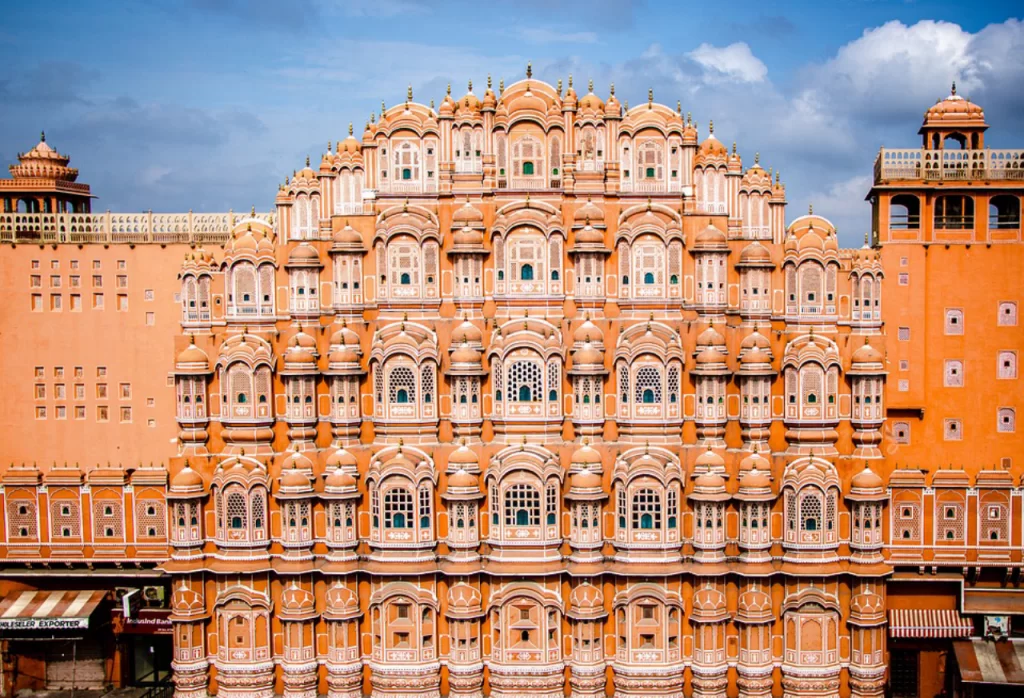
This picture is taken from: pixabay.com
The “Palace of Winds” or Hawa Mahal is so called because, with its 953 ornate windows, it resembles the honeycomb of a beehive. Because Maharaja Sawai Pratap Singh, the king who commissioned its construction, was a fervent follower of Lord Krishna, it is also shaped like a crown. This palace, one of Jaipur’s most visited tourist destinations, has the record for being the tallest structure in the world without a foundation. Due to its pyramidal design, the palace is bent but still stands firmly.
Interesting fact: It was thought that this structure was built to allow the royal women to gaze outside as they were always ensconced in a “purdah.”
Entrance fee: INR 10 for Locals, INR 50 for foreigners
Open from 9 a.m. to 4 p.m.
The beautiful latticework on the tiny windows is a must-see.
Constructed by Pratap Singh
8. Khajuraho Temples, Madhya Pradesh
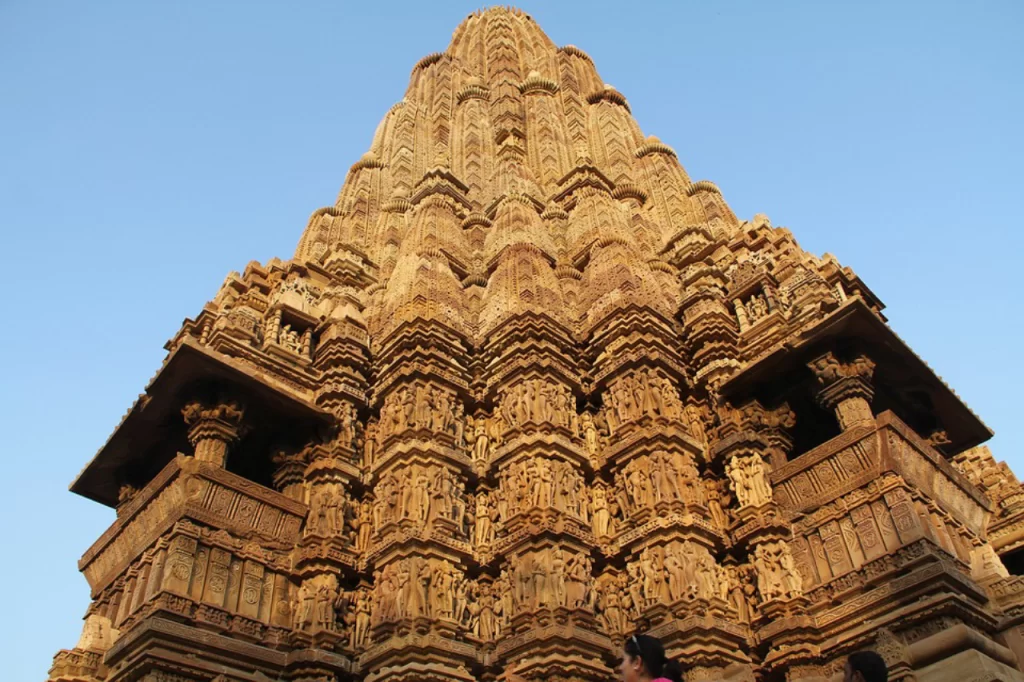
This picture is taken from: pixabay.com
It has long been believed that Khajuraho is the epitome of sensuality and erotica. This is a false image, though, as only around 10% of the sculptures are sensuous; the majority are typical representations. At one of India’s most historic locations, there are countless sculptures showing love, eternal grace, beauty, delicateness, and the creative arts. Khajuraho temples have carvings of cult icons, demigods, and Apsaras, making them a perfect synthesis of Hinduism and Jainism.
Interesting fact: Khajura, which means date palms in Hindi, is how the city received its name because it was covered in them. In the past, it was also frequently referred to as Khajjurpura.
Entrance fee: INR 10 for Locals; INR 250 for foreigners (only for the western temples, rest are free)
Open from 8 to 6
The Sound and Light Show which tells the story of the Chandela dynasty is a must-see.
The Chandela dynasty constructed it.
Construction began between 950 and 1050 AD.
9. Sanchi Stupa, Madhya Pradesh
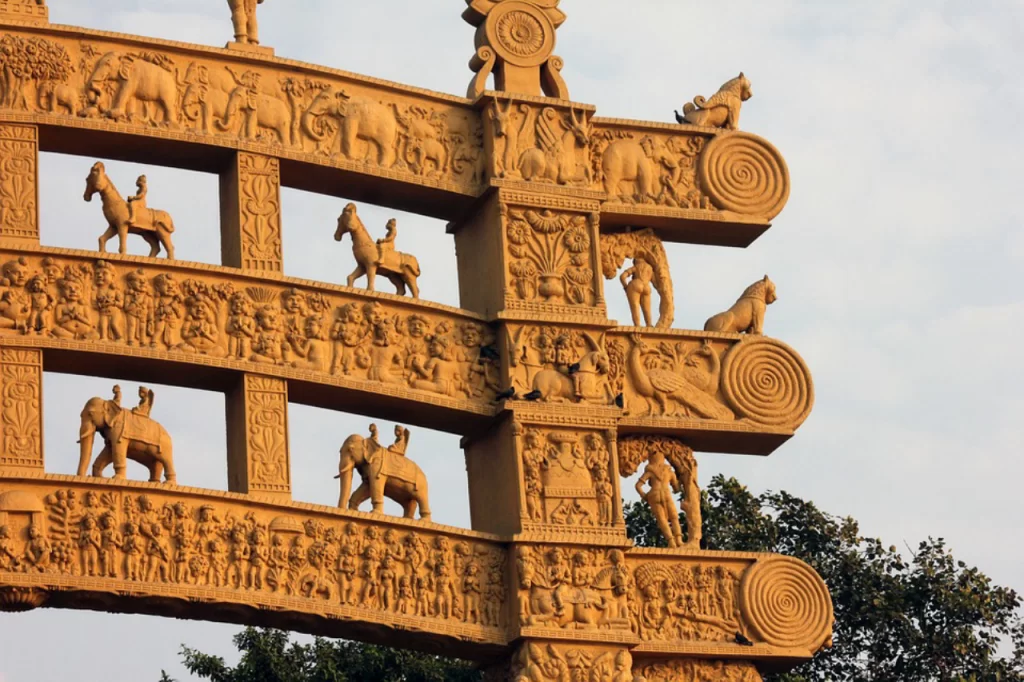
This picture is taken from: pixabay.com
See one of the most spiritual Buddhist sites at the Sanchi Stupa, which houses Buddha relics. For Emperor Ashoka, Lord Asoka constructed this renowned historical site in India in the third century B.C. The stupa’s dome represents the wheel of law, and the circle of life and death and the freedom of the Buddha are both represented by this stupa (Moksha). The four entrances to the stupa each feature a different scene from a Jataka story or a biography of Buddha.
The Buddha’s relics were polished with a Mauryan polish to give them a glass-like glow, which is an interesting detail.
Entrance fee: INR 10 for Locals; INR 250 for foreigners
Open: 7:30 a.m. to 5:00 p.m.
A must-see The Ashoka pillar is decorated with four lions and features a Greco-Buddhist design. It serves as India’s flag’s national emblem.
Constructed by: Ashoka the Great
Finished in the third century BCE
10. Konark Temple, Odisha
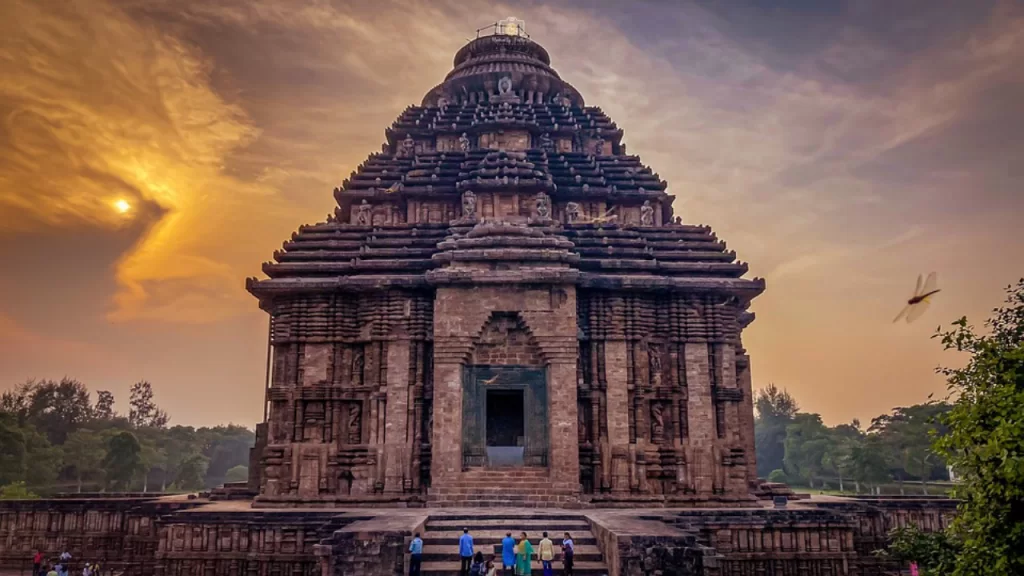
This picture is taken from: pixabay.com
The Konark Temple was created by King Narasimhadeva I, a famous ruler of the Ganga dynasty, and 1200 artisans. This temple, which is one of the most well-known historical sites in India, is situated on the Bay of Bengal coast and represents the exquisite craftsmanship of ancient construction. A particularly intriguing scene is when two lions are seen stomping on elephants at the temple’s entryway, while a body is lying at the elephant’s feet.
Interesting fact: The 12 wheels at the temple’s foundation serve as precise timekeepers called sundials.
Entrance fee: INR 10 for Locals; INR 250 for foreigners
On Fridays, there is no entrance cost.
Open daily from 10 to 5 p.m. (Fridays are off)
The three sun god statues, where the sun shines at sunrise, noon, and sunset, are a must-see.
Raja Narasinghs Deva I built it
Dated to: the 13th century BCE
11. Mahabodhi Temple, Bodh Gaya
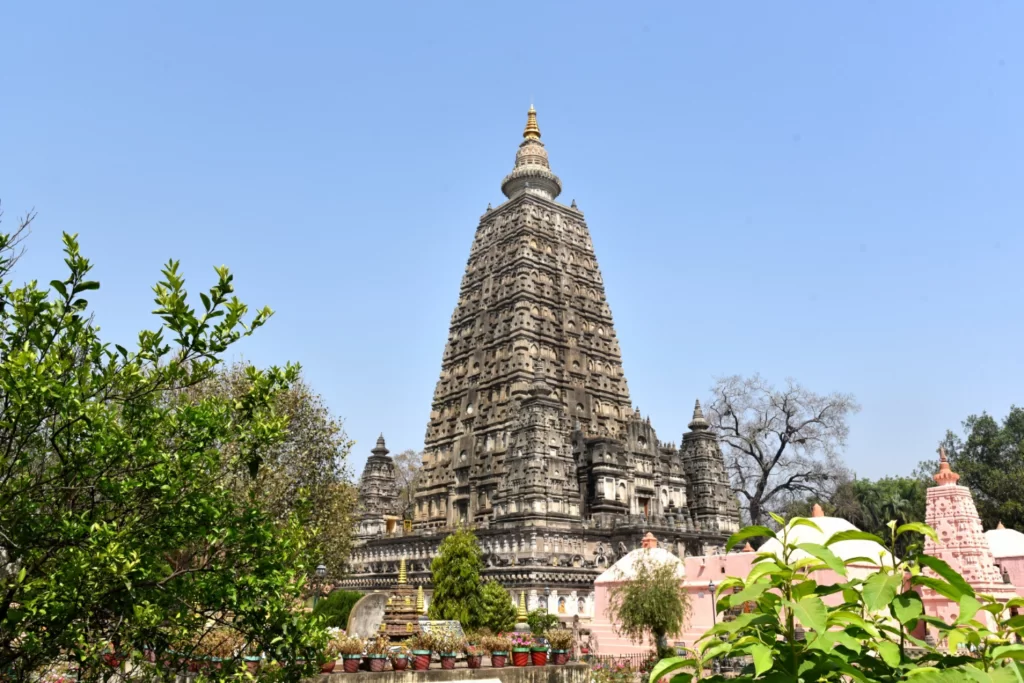
This picture is taken from pexels.com
Visit the Mahabodhi temples, one of the four Buddhist holy sites. The Buddha is reputed to have acquired enlightenment here while meditating beneath a fig tree. The Fig tree’s ancestor, the Bodhi tree, is located just next to the temple. In the third century BC, Ashoka erected the first temple. A huge statue of Buddha resting his right hand on the ground at the temple.
The Bodhimanda is the location where the Buddha obtained enlightenment under the Bodhi tree. This location is anticipated to be the first to arise when the world is recreated and the last to go when the world ends.
Admission is free
Open from 5 am to 9 pm
A must-see The Buddha is reputed to have engaged in a seven-day walking meditation retreat here on the Jewel Path after attaining enlightenment.
Constructed by: Ashoka the Emperor
Built-in the third century BCE
12. Rani Ki Vav, Gujarat
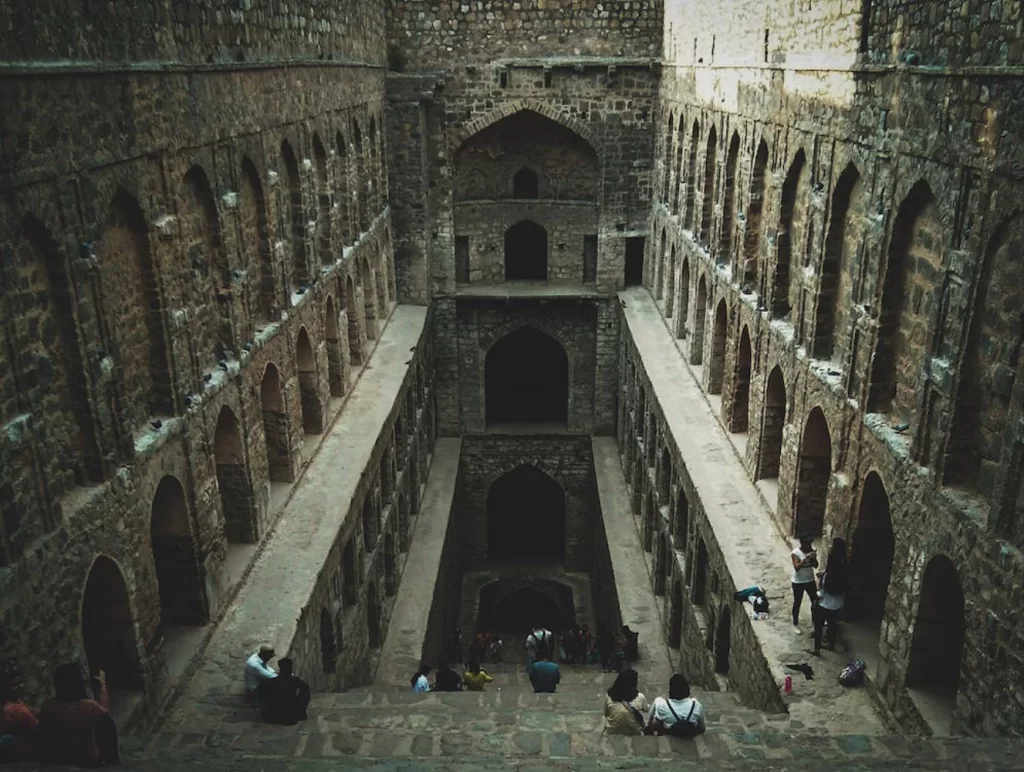
This picture is taken from: pexels.com
The Rani ki Vav stepwell is a gigantic structure that is roughly 24 meters deep, so exploring it will seem like crawling down an anthill. This stepwell, one of India’s least-known historical sites, was constructed in the 11th century AD as a memorial for King Bhimdev of the Solanki dynasty by his wife Queen Udayamati. The stepwell’s lowest level was once used as a means of escape to reach nearby communities. It is among Gujarat’s most picturesque destinations.
Interesting fact: When you approach the water level, a sculpture of Vishnu resting on a thousand snakeheads will be visible. The center level’s theme is “Dasavatars,” which refers to 10 different manifestations of Vishnu.
Open daily from 8 am until 6 pm
The exquisitely carved sculptures of Yokinis, Apsaras, and Nakakanyas in the seven galleries are a must-see.
Built by: Udayamati
13. Victoria Memorial, Kolkata
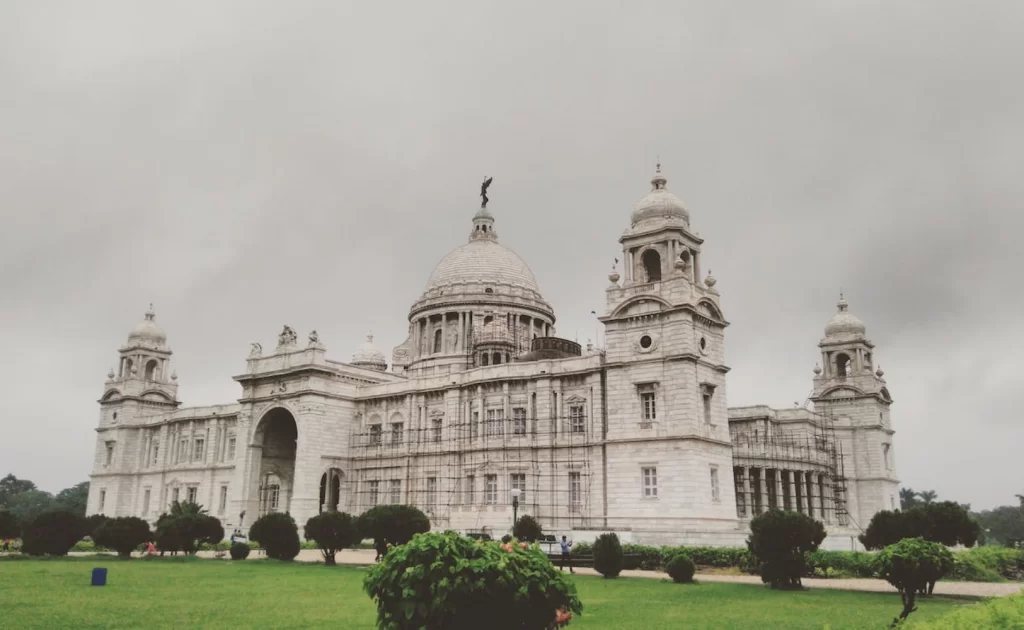
This picture is taken From: pexels.com
One of India’s most historically significant tourist destinations is the Victoria Memorial in Kolkata, which was constructed at the height of the British colonial reign there. Although Sir William Emerson created the monument’s physical design, the idea for it was developed by the Viceroy at the time, Lord Curzon.
This magnificent monument has a museum loaded with British antiques, such as firearms, paintings, sculptures, and antiquities, as well as numerous lush gardens and a royal portrait of the Queen. Russian artist Vasili Verestchagin produced one of the nicest paintings you will see anywhere. In this artwork, the Prince of Wales is seen visiting Jaipur in 1876.
Interesting fact: Two sets of enigmatic inscriptions are present on the monument. The first one stands for Victoria Regina Imperatrix and the second one for Dieu Et My Droit. The former signifies “God and my right,” while the former denotes Victoria as Queen and Empress.
Entrance cost: Westerners pay INR 200; Indians pay INR 20
Open every day from 5:30 am to 6:15 pm
A must-see is the “Angel of Victory” statue, which is a black bronze statue that stands atop the memorial’s dome. It also serves as a weathercock when the conditions are right.
Built by Lord Curzon
Finalized in 1921
14. Jallianwala Bagh, Punjab
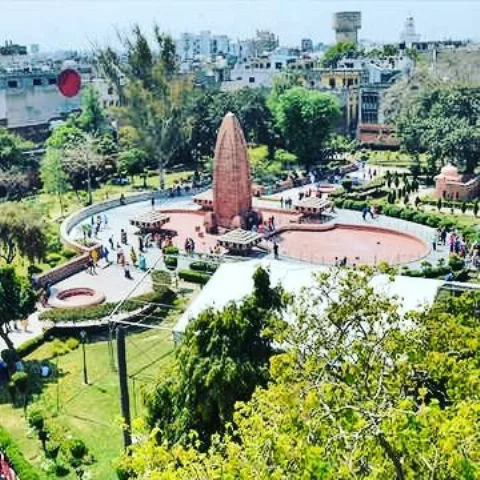
This picture is downloaded from facebook.com
This memorial is located close to the Golden Temple in Amritsar, the site of the horrific Jallianwala Bagh massacre. It is the location where General Dyer ordered a mass shooting on Baisakhi, with an area of roughly 6.5 acres. In this catastrophe, thousands of innocent people died. That was one of the events that sparked the American Revolution for Independence. On April 13, 1961, the monument was built here by Dr. Rajendra Prasad, the president at the time.
Interesting fact: This is where the infamous Jallianwala Bagh Massacre occurred.
Open From: 6:30 am – 7:30 pm
Must see: The step well that dominated the slaughter scene.
Constructed by Benjamin Polk (memorial)
15. Gwalior Fort, Madhya Pradesh
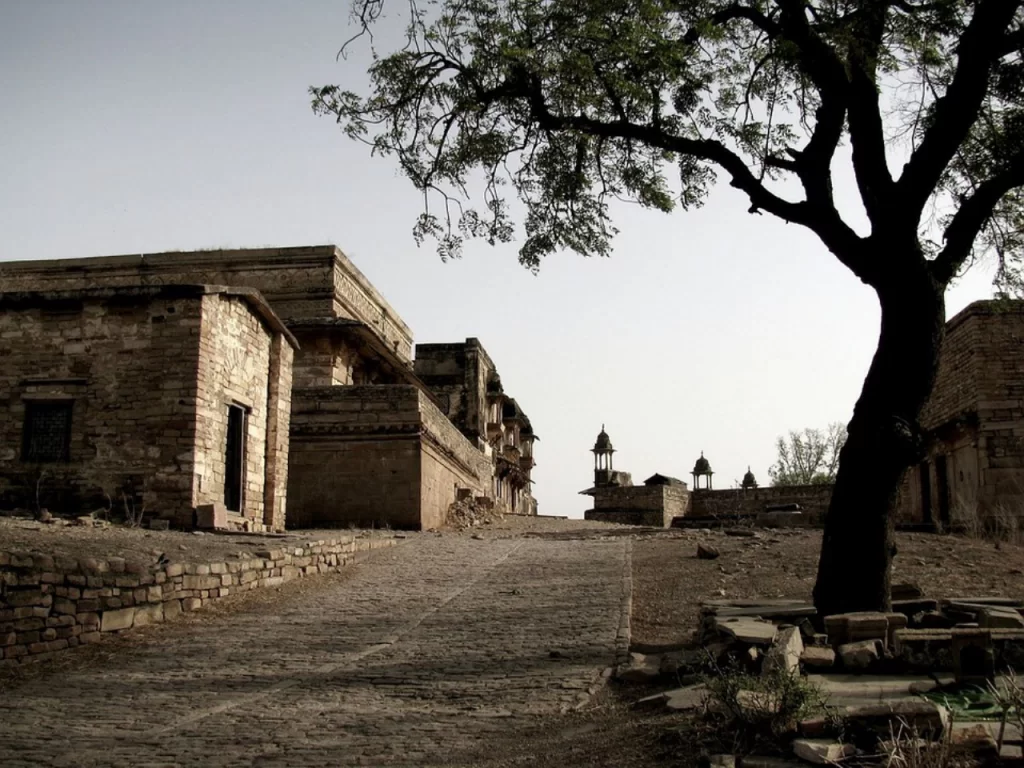
This picture is taken from: pixabay.com
Gwalior Fort has been there for a while and was a famed fort in its day. According to some reports, it was built in the sixth century, or earlier. Mughal Emperor Babur called it a gem among Indian castles. This is the second-oldest occurrence of the numeral zero. It is a key component of the history and identity of the old city of Gwalior and is located there.
It was built in the sixth century and is home to the second-oldest carving of the number zero.
Admissions are 75 INR for adults and free for children fewer than 15
Open six to five thirty
A must-see The Karan Palace, Man Mandir, Gujari Palace, and Jahangir Palace
Constructed by Man Singh Tomar
Finished in the third century BCE (later developed into the fort it is today)
16. Golden Temple, Punjab
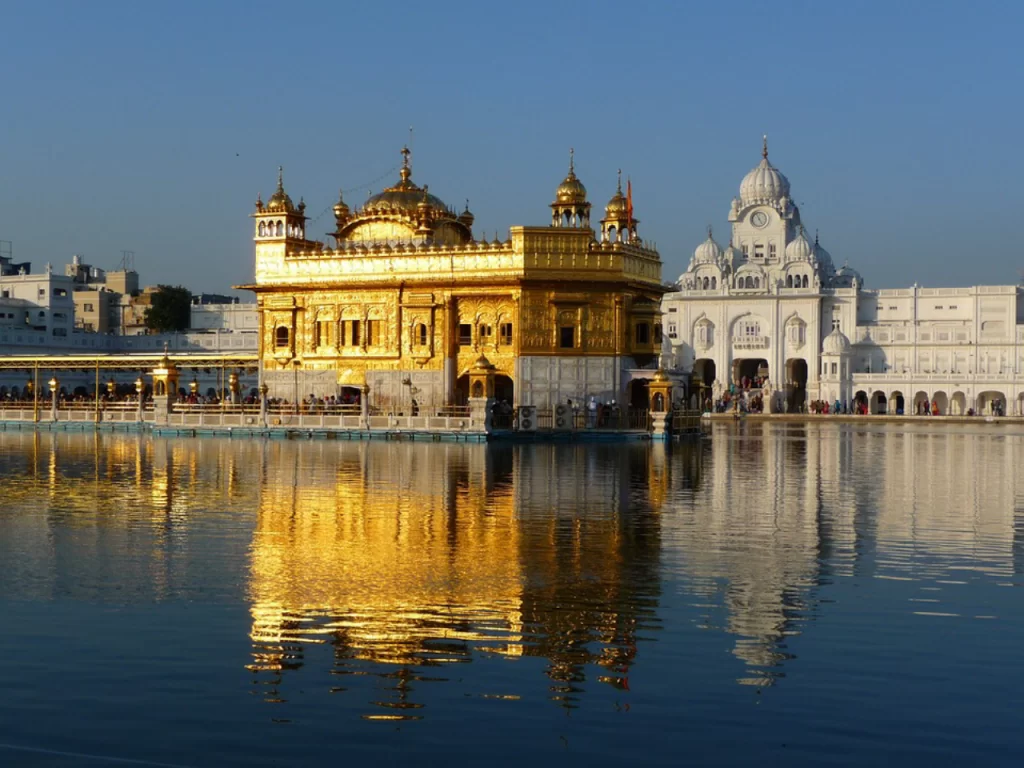
This picture is taken from: pixabay.com
Sri Harmandir Sahib is one of India’s most significant spiritual sites and one of the most well-known Gurudwaras in the entire globe. It has been existing for a while, but in 1830 Maharaja Ranjit Singh renovated it with pure gold and marble. More than 100,000 pilgrims stop by daily to see this landmark in the center of Amritsar.
Interesting fact: Here, about 100,000 people participate in the Langar every day.
Free admission
Open from: Alternates monthly
Amrit Sarovar and Ramgarhia Bunga are must-sees.
Constructed by Guru Ram Das
17. India Gate, Delhi
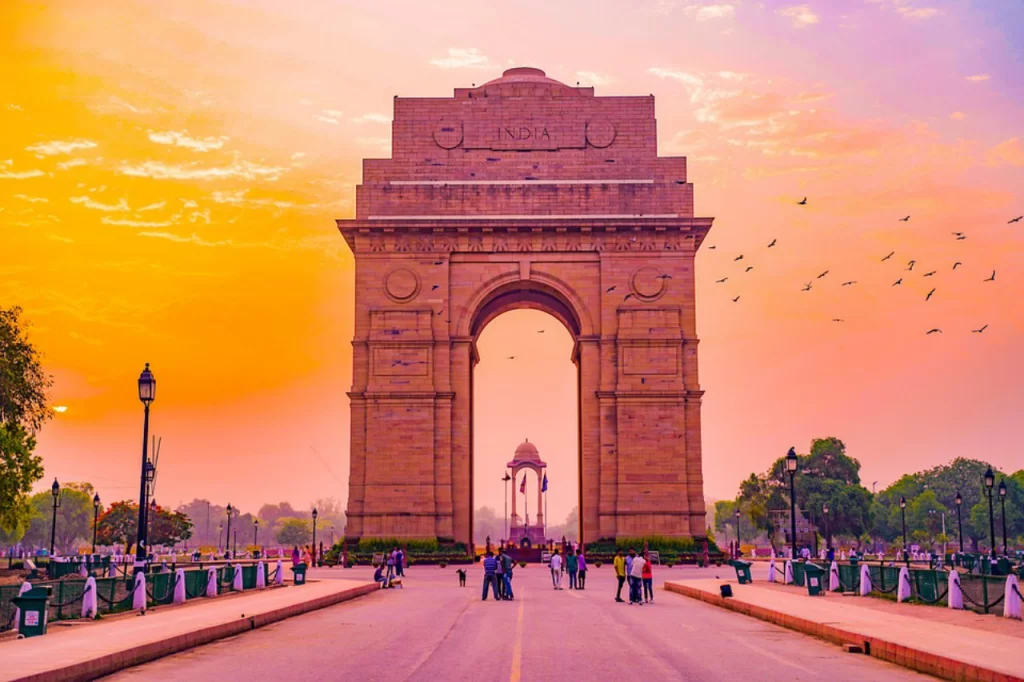
This picture is taken from pixabay.com
Its 42-meter structure is frequently contrasted with the Parisian Arch de Triomphe and Rome’s Arch of Constantine. The India Gate was created by Edwin Lutyens, and it is situated on the Rajpath. It was constructed in 1931 and is dedicated to the 13,300 men who died in the Third Anglo-Afghan War and the 82,000 soldiers of both Indian and British heritage who served in World War One. The Republic Day Parade is conducted here each year. It is a famous location among both locals and tourists.
Dedicated to the roughly 1 lakh men who lost their lives in the Third Anglo-Afghan War during World War I. It is the location where the eternal flame, Amar Jawan Jyoti, continues to burn.
Admission is free.
Whenever it is open
Children’s Park and Amar Jawan Jyoti are must-sees.
Designed by Edwin Lutyens
18. Mehrangarh Fort, Jodhpur
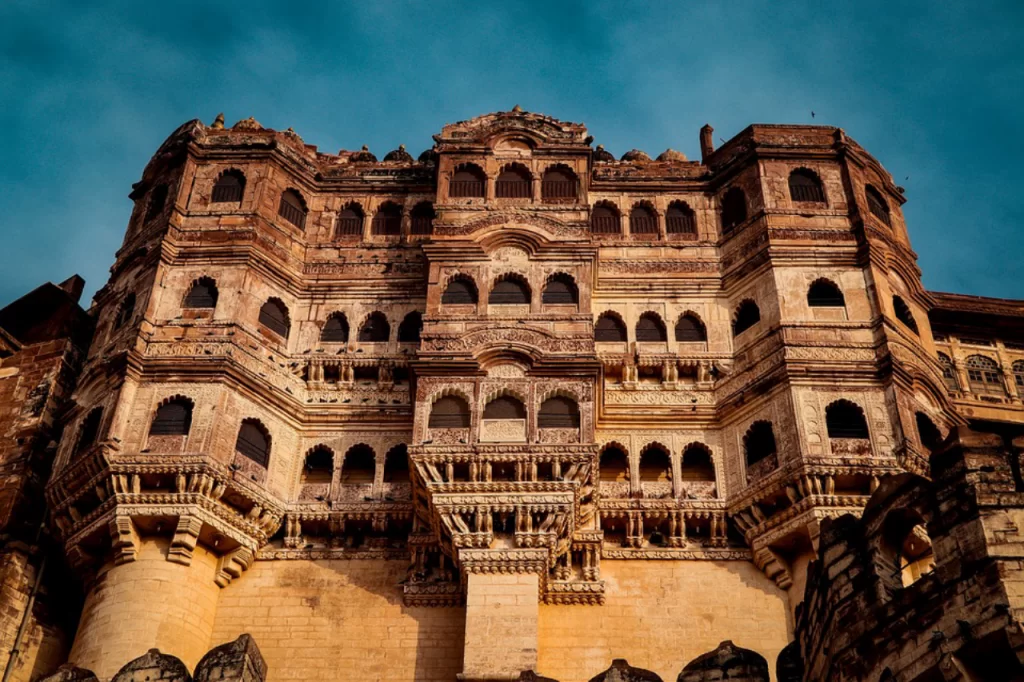
This picture is taken from pixabay.com
It is one of the largest forts in India and was built by Rao Jodha in 1459. The facility, which is tucked away on a hill, has seven entrances. Every gate was built at a distinct time and for a different reason. For instance, the Vijay Gate was constructed to commemorate King Man Singh’s victory over Bikaner and Jaipur. Inside the compound, there is a Glass Palace and a Rose Palace. Several Hollywood and Bollywood films have included this fort as well.
Interesting fact: It is 410 meters above sea level.
Fee for entry: Indian Citizens: INR 70 (for those who don’t want an audio guide); Others: INR 700 (With Audio)
Open daily from 9 to 5 p.m.
The seven gates and the lesser palace complexes are must-sees.
Construction: Rao Jodha
19. Amer Fort, Jaipur
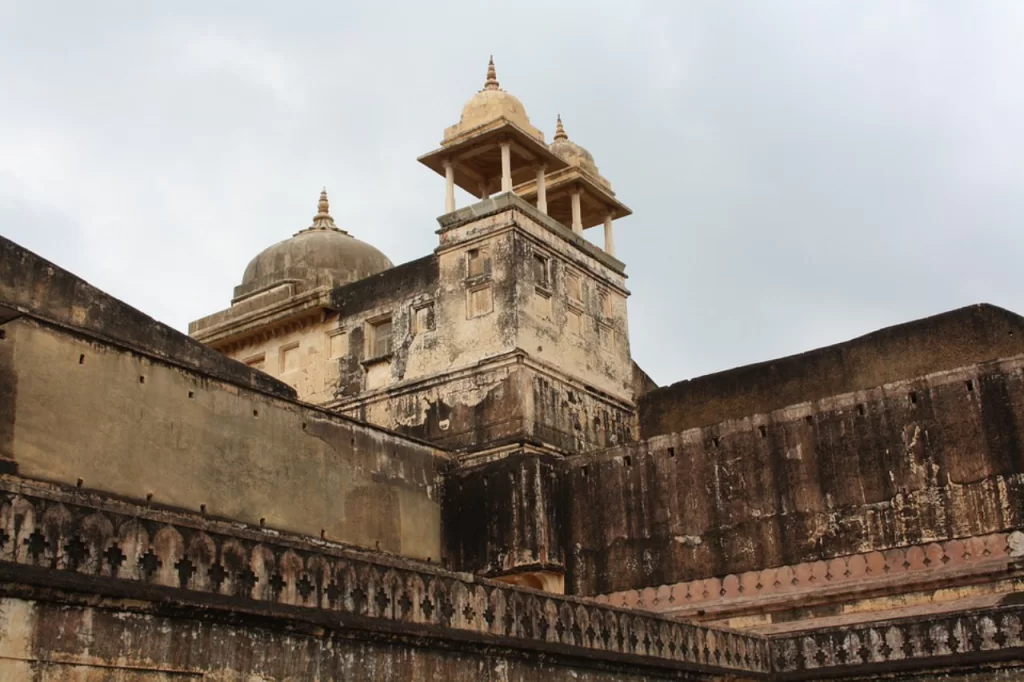
This picture is taken from pixabay.com
Amer Fort, one of India’s most majestic forts, is only 11 miles from the Pink City of Jaipur. It was certainly a king’s palace when it was constructed in 1592 by Maharaja Man Singh. In the center of Rajasthan is yet another UNESCO site. It is a striking structure made of pink and yellow sandstone. One of the most popular destinations in Jaipur, this fort receives more than 5,000 visitors each day.
King Man Singh is a fascinating truth. One of King Akbar’s most honored generals was me.
Foreigners pay INR 200; Indian adults pay INR 25; Indian students pay INR 10
Open nine to six daily
Elephant Ride and Raja Man Singh’s Interiors are must-sees. I Constructed in 1592
20. Kumbhalgarh Fort, Rajasthan
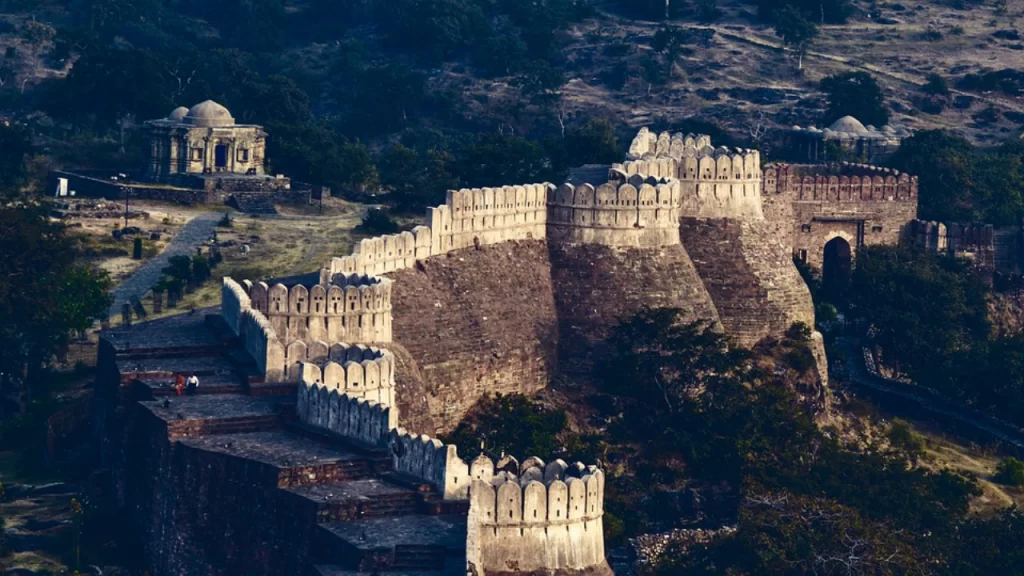
This picture is taken from pixabay.com
Another well-known fort in Rajasthan is well-known for both its magnificent fort and its animal sanctuary. It is maintained by the Rajasamand district and was built by King Kumbha. If you live in the city, it is a perfect day excursion because it is only 82 miles from Udaipur. Due to the palace’s exquisite architecture, it is a popular tourist destination.
Fascinating fact: After the Great Wall of China, Kumbhalgarh’s walls are the second-longest in the world.
Entrance fee: Rs. 15 for citizens and tourists from the SAARC; Rs. 200 for everyone else
Open daily from 9 to 5 p.m.
Kumbha Mahal, Badal Mahal, Hanuman Pol, and Neelkanth Mahadev Temple are all must-sees.
Constructed by Rana Kumbha
21. Lakshmi Vilas Palace, Vadodara
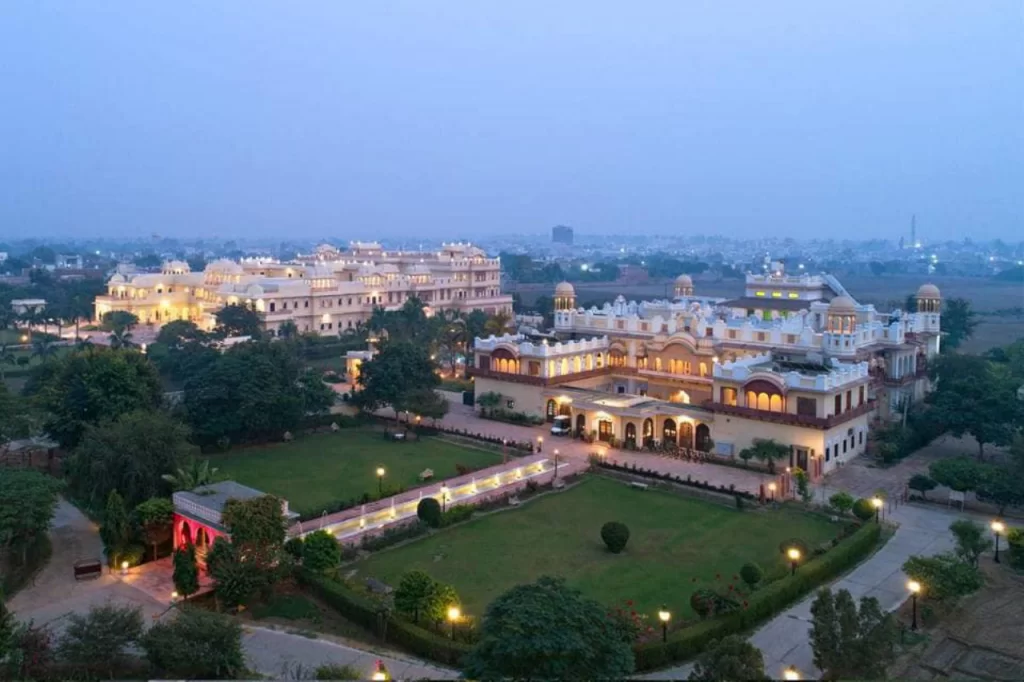
This picture is taken from facebook.com
Constructed by the illustrious Gaekwad dynasty, rulers of Baroda. It was created by Maharaja Sayajirao Gaekwad in 1890 and was the first component of Sarkar Wada. With its Indo-Saracenic design, the palace is unique. The grounds contain a golf course that was used to amuse British visitors, while the interiors are decorated in a European style. It continues to be one of India’s lesser-known historical sites.
Fascinating fact: At four times the size of Buckingham Palace, the Lakshmi Vilas is reputed to be the largest private mansion ever constructed.
Entrance costs are INR 60 for the museum and INR 150 for the palace.
Open daily from 9 to 5 p.m.
A must-see Crown Chamber, Gaddi Hall, and Royal Armory
Maharaja Sayajirao Gaekwad III constructed
22. Gateway of India, Mumbai
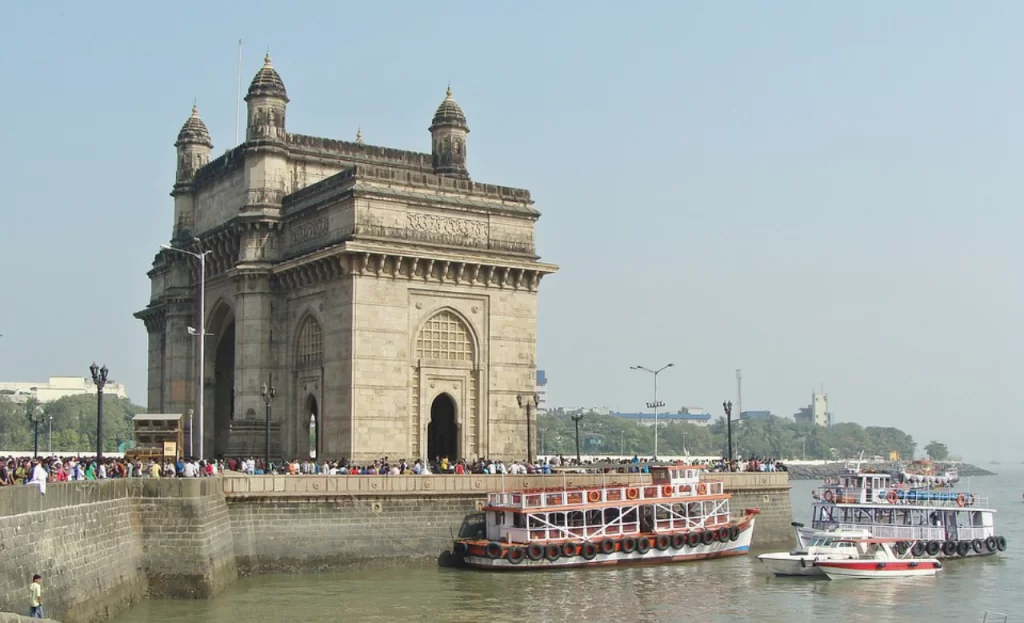
This picture is taken from pixabay.com
The Gateway of India is one of the significant locations in India. It was constructed as a point of access for entry and exit during the British era. The Viceroy, the Lord of Reading, opened the completion of this historic entrance in 1924. It has intricate latticework all over the turrets and has been reinforced throughout time with yellow basalt and concrete. Later, the statues of Swami Vivekananda and Chhatrapati Shivaji were also erected near the Gateway.
Fascinating fact: In the 20th century, the final British ship sailed from the Gateway of India for England.
Admission is free
Open 12 a.m. to 12 p.m.
You must see: From the steps beyond the entrance, you can travel to Elephanta Island.
Construction: George Wittet
23. Ajanta & Ellora Caves, Aurangabad
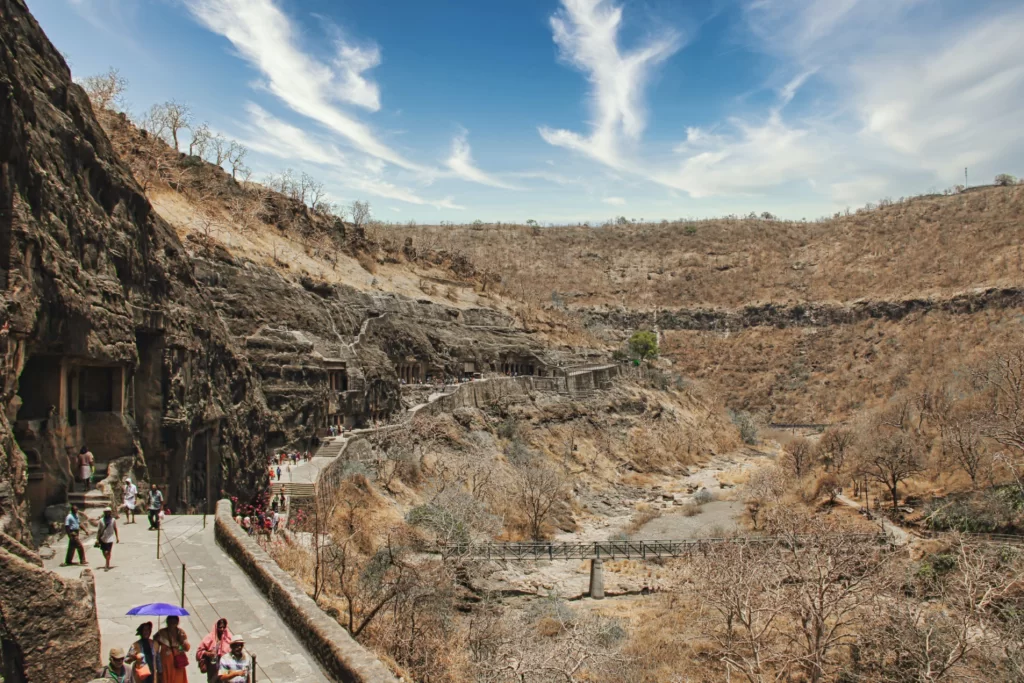
This picture is taken from unsplash.com
The rock carvings in the Ajanta-Ellora caves show true workmanship because they were all done by hand. John Smith, a British officer, had no idea that the magnificent Ajanta caves would be found when he set out in 1819 to pursue a tiger. There are many sculptures and paintings in these 29 caves that depict Buddha and other Jataka stories.
The 34 caves of Ellora were cut into the sides of a basaltic hill and combined three separate religions: Buddhism, Jainism, and Brahmanism. There are 12 caves dedicated to Buddhism, 17 to Hinduism, and 5 to Jainism. Monasteries that were utilized for prayer and study make up the majority of these caverns.
Interesting fact: It is thought that Buddhist monks would sit in the Ajanta caves and sculpt during the rainy seasons when they were forbidden from leaving.
Entrance fee: INR 10 for Locals; INR 250 for foreigners
On Fridays, there is no entrance cost.
Open daily from 9 am until 5 pm (Ellora caves close on Tuesdays, and Ajanta caves close on Mondays)
A must-see Ajanta: Cave 26, which contains a stupa and a lavishly decorated Chaitya hall.
Ellora: The “Cavern of the Ten Avatars,” constructed under Krishna’s rule.
Architects: Satavahanas and Vakataka
From 200 BC to 100 AD, the fifth century AD
24. Charminar, Hyderabad
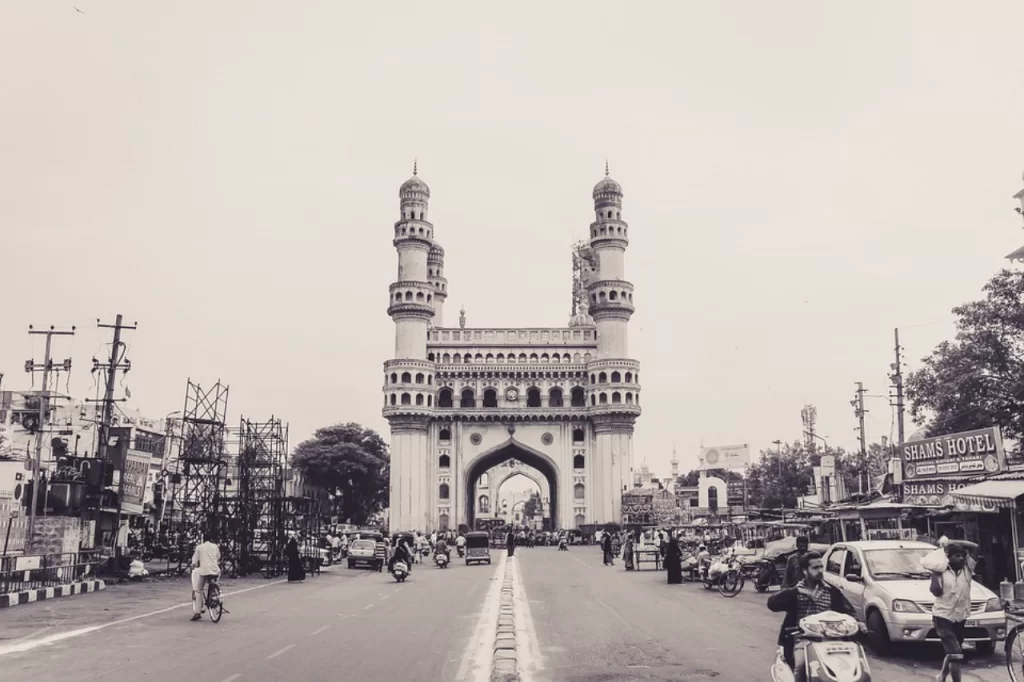
This picture is taken from pixabay.com
Inte the Charminar was supposedly constructed in 1591 by Muhammad Quli Qutb Shah as a way to praise Allah. Nevertheless, in actuality, this famous historical site in India was constructed to symbolize the eradication of the plague from the city. According to legend, there is a hidden passageway leading from the monument to the Golconda fort, although it has not yet been found. This monument’s minarets each have four floors, and each arch includes a clock.
Interesting fact: To fend off rodents that once nearly destroyed Hyderabad, there is a cat’s head in one of the arches.
Entrance fee: INR 5 for Locals; INR 100 for foreigners
Open from 9 a.m. to 5 p.m.
Must visit: Laad Bazaar is a great place to find a variety of unusual objects, and the market itself has a number of eateries.
Constructed in 1591 by Muhammad Quli Qutb Shah
25. Mysore Palace, Karnataka
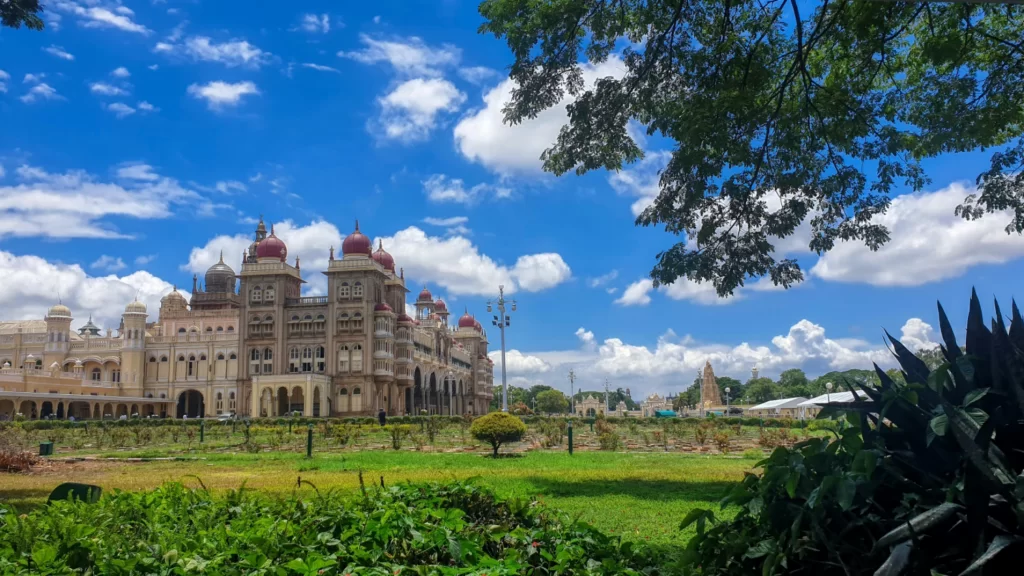
This picture is taken from: unsplash.com
The Mysore Palace, formerly the residence of several kings, is now a museum that houses all the Wodeyar dynasty’s royal portraits, attire, and antiques. One of India’s most historic locations, this palace is routinely visited by a number of tourists. The palace was constructed and improved over the years by several rulers, resulting in a mix of Hindu, Rajput, and Mughal styles, making it one of India’s heritage sites. The pavilion inside the temple where royal marriages are held is decorated with glazed tiles, chandeliers, and iron pillars.
Fascinating fact: During the Dasara festival, the Maharajas once sat atop a golden palanquin that was then pulled by elephants. The idol of Lady Durga is now set inside the palanquin.
Entrance fee: INR 40 for Indians; INR 200 for foreigners
Open daily from 10:00 am to 5:00 pm (Sundays and statutory holidays are closed)
Must see: The approximately 10,000 lights used to illuminate the palace during the Dussehra holiday.
Maharaja Krishnaraja Wadiyar IV constructed
26. Hampi, Karnataka
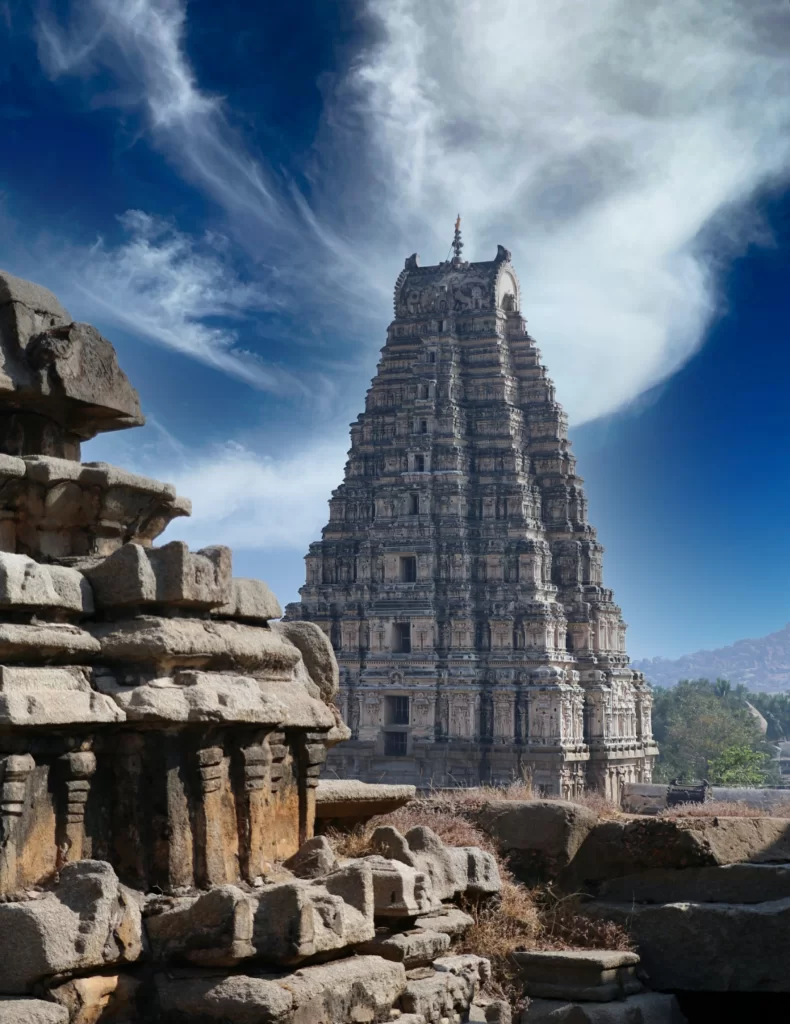
This picture is taken from unsplash.com
The rocky outcrops, chariot arches, gopurams, elephant stables, and beautiful palaces of Hampi all tell the story of one of the most important Hindu dynasties. It is thought that Lord Rama and his brother went to this famous location to look for Sita. They enlisted the aid of the then-ruling region’s two brothers, Bali and Sugriv. One of South India’s most well-known historical locations, this UNESCO World Heritage Site also served as the location of Vijayanagara’s primary coin mint.
Interesting fact: This location has been the site of human settlement since the year 1 CE.
Entrance fee: 10 rupees for Indians and 330 rupees for foreigners
Vittala Temple, Zenana Enclosure, and the Elephant Stables are the three historic sites that are accessible with this ticket.
From 10:00 am till 5:00 pm (closed on Fridays)
The 14th-century carvings on the Hampi Monuments are a must-see.
Lakkana Dandesha constructed it.
27. Chola Temples, Tamil Nadu
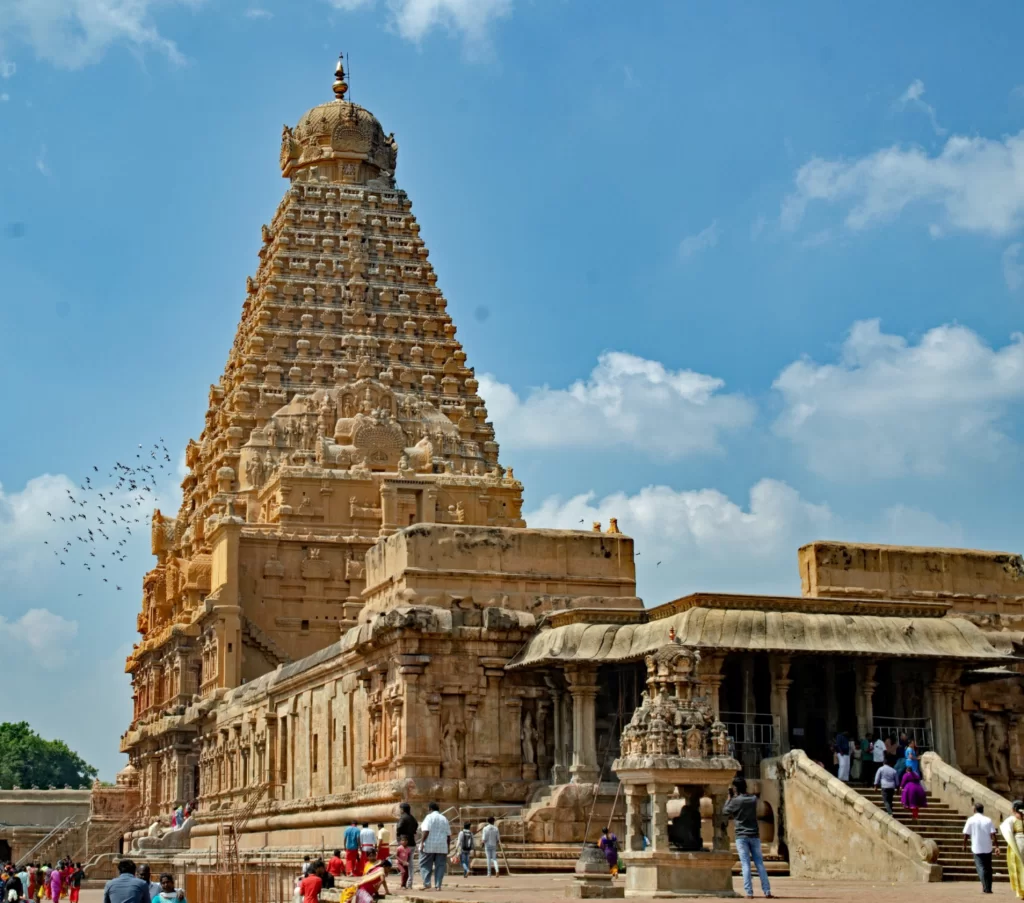
This picture is taken from unsplash.com
See the trio of three famous Chola temples: Brihadeshwara Temple in Tanjore, Airavatesvara Temple in Darasuram, and Brihadeeswara Temple in Gangaikonda Cholapuram, and get ready to embark on an epic voyage through time. The three temples were constructed by the Chola dynasty kings, who ruled one of South India’s most powerful kingdoms. The structures at Tanjore and Cholapuram were constructed in the eleventh century, while the structure in Darasuram was constructed in the twelve.
Interesting fact: While touring Sri Lanka, Raja Raja Cholan had a dream that gave him the idea to construct the Brihadeshwara Temple at Tanjore.
Admission is free
Open six-thirty to eight-thirty (The temples are shut from 12 pm to 4 pm)
A must-see in The Brihadeshwara Temple, Raja Raja Cholan is seen in the first royal portrait presenting himself to Lord Natarajar.
Constructed by: Rajaraja the Great
28. Mahabalipuram, Tamil Nadu
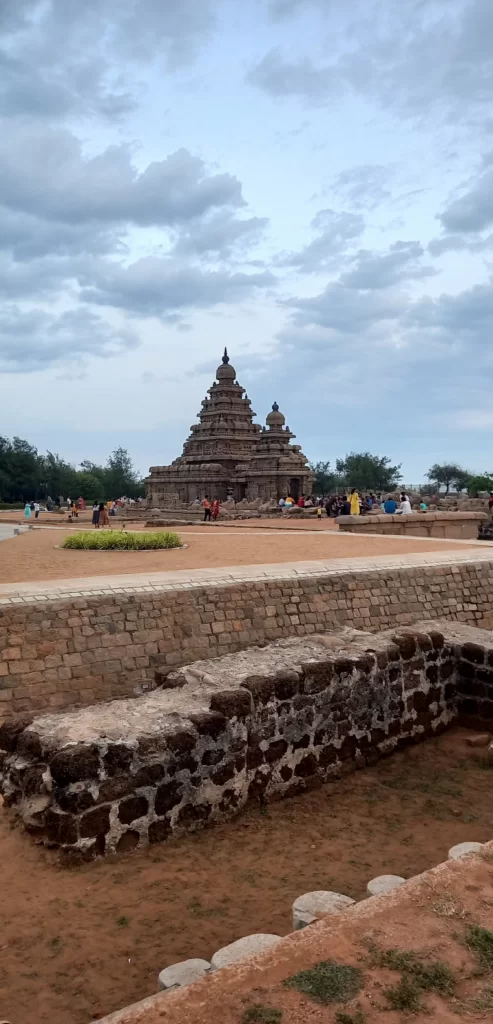
This picture is taken from unsplash.com
Mahabalipuram’s main draws are its Dravidian-style temples, which are adorned with many sculptures. One of the oldest historical sites in India, the stone sculptures showcase Pallava art and took more than 200 years to produce.
Mahabalipuram is home to 11 temples known as Mandapas, which feature both Dravidian-style architecture and a number of Buddhist components. These are located on either side of the hills. Among this area’s most well-known tourist destinations include the Beach Temple, Arjuna’s Penance, and the Cave temples.
Interesting fact: The pink granite sculpture “Descent of the Ganges” depicts how Lord Shiva caused the Ganges to flow from the sky to the earth.
Entrance fee: INR 10 for Indians; INR 350 for foreigners
Open from 6 a.m. to 6 p.m.
A must-see These temples in Mahabalipuram are well known for their dance festivals. Every year in December or January, the Mamallapuram Dance Festival is held.
29. Chhatrapati Shivaji Terminus, Mumbai
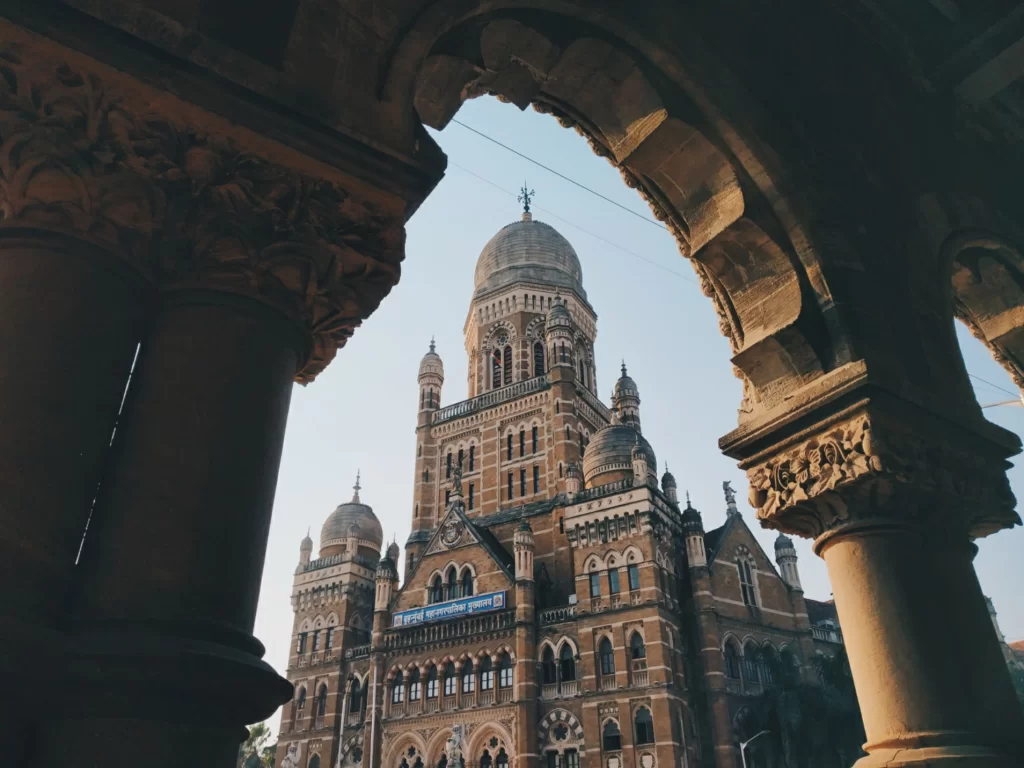
This picture is taken from unsplash.com
It has Victorian-Gothic architecture and is a UNESCO World Heritage Site. It is a railroad station in Mumbai, the state’s capital. It is the headquarters of central railways, having been built in 1887. When compared to the rest of Mumbai, this famous monument of India’s financial center appears to have stood the test of time. It is the starting point for many long- and short-distance trains.
Interesting fact: It took 10 years to construct and was built to celebrate Queen Victoria’s 50th birthday.
No entry fee
Open: constantly
Must see: To experience the true spirit of Bombay, board a train at CST.
Frederick William Stevens built it
30. Gol Gumbaz, Karnataka
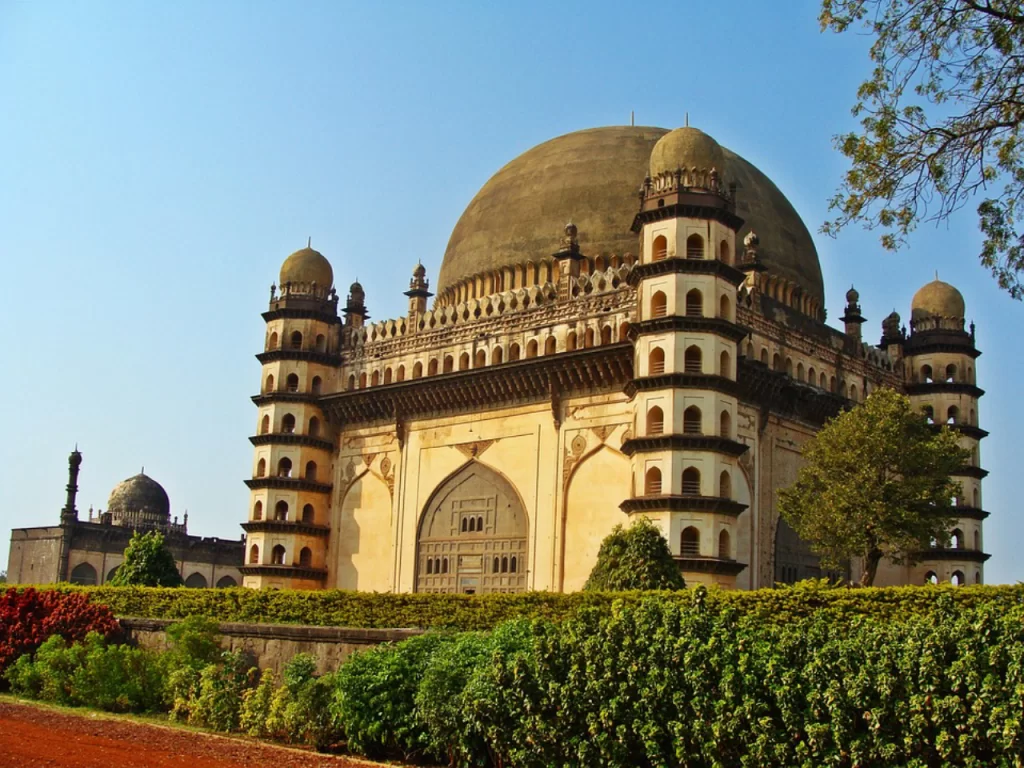
This picture is taken from pixabay.com
The mausoleum of Mohammed Adil Shah, the seventh king of the Adil Shah Dynasty, was built in 1656 and is known as Gol Gumbaz. Gol Gumbaz, which is kept up by ASI, is literally translated as “circle dome” (Archaeological Survey of India). It took 30 years to construct and is one of Kerala’s most significant tourist destinations. The wives and daughters of the Sultan of Bijapur are also housed in the structure, which was created by Yaqut of Dabul.
Interesting fact: The Taj Mahal in South India is made of dark grey basalt and has Deccan Indo-Islamic architecture.
Entrance fee: INR 10 for Locals; INR 100 for foreigners
Open daily from 10 am to 5 p.m.
A must-see King and family’s Crypt, Whispering Gallery
Built-in 1656 by Yaqut of Dabul.
31. Cellular Jail, Port Blair
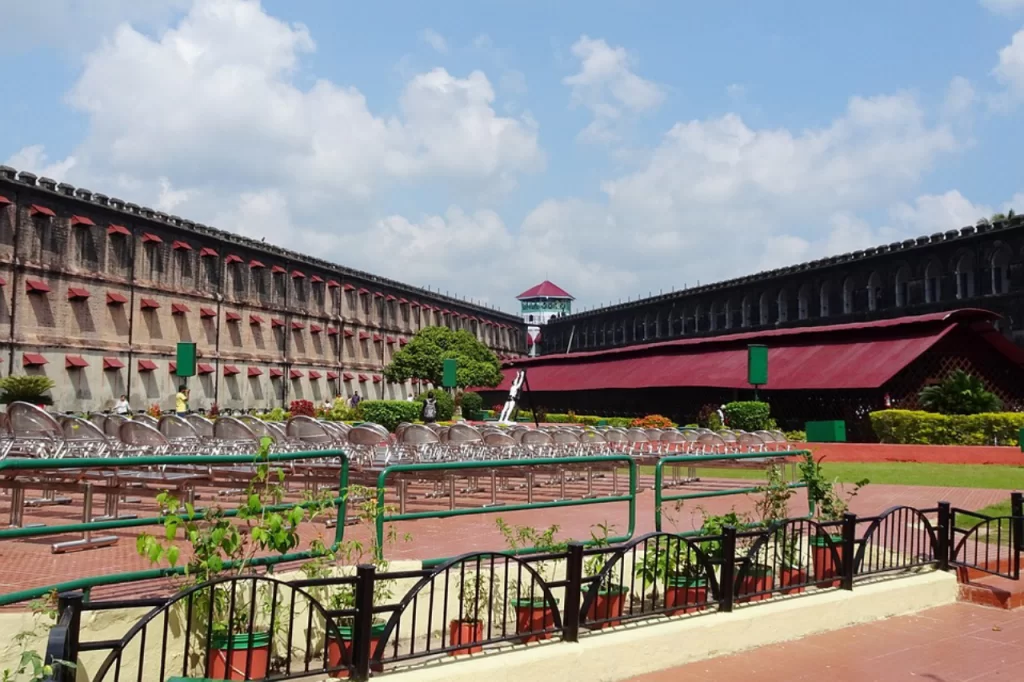
This picture is taken from pixabay.com
One of Port Blair’s most well-liked tourist destinations is Cellular Prison. The prison, which is stranded on a remote island, was once used by the British to punish criminals. Cellular Prison is also known as Kala Pani, which means exile until death. The former colonial prison has now been transformed into a tourist destination where visitors can see what life was like for prisoners who were subjected to cruel treatment. If you are in the Andaman & Nicobar Islands, it is worthwhile to visit.
Interesting fact: During the fight for independence, prisoners included freedom heroes Batukeshwar Dutt and Veer Sawarkar.
Entrance Fee: 30 INR
Open nine to one, two to five, and closed on Monday
See the Light and Sound Show!
Construction: British India
32. Elephanta Caves, Maharashtra
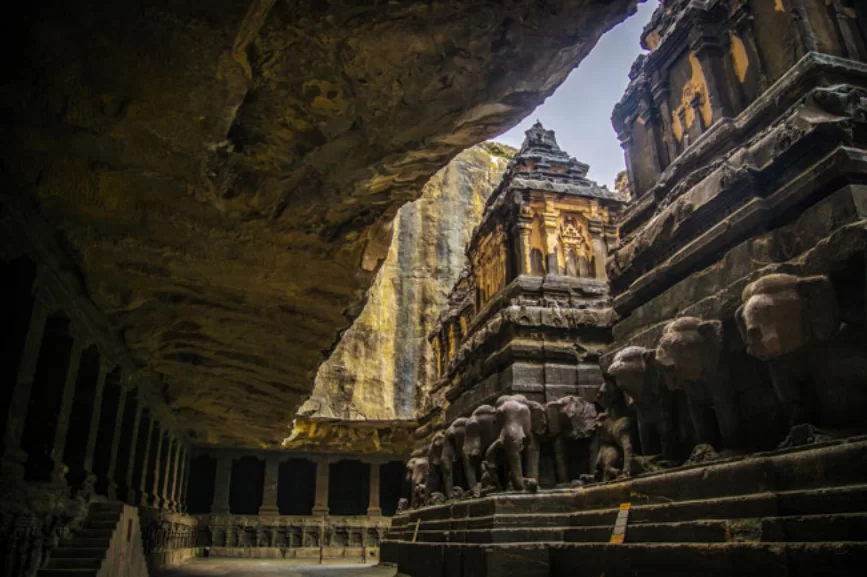
This picture is downloaded from facebook.com
As a UNESCO World Heritage Site, Elephanta Caves have been honored. The cave exhibits Indian medieval rock-cut art and construction techniques. The caverns date from the fifth and seventh centuries. There are essentially two groups of caves. Two Buddhist caves make up the second group, while the first group consists of five Hindu temples.
Fun fact: The ferry voyage from Mumbai to the caverns is exciting.
Entrance Fee: INR 250 for foreigners; INR 10 for Indians
Open nine to five thirty
A must-see incredible perspective of Mumbai’s skyline
Buddhist Hinayanas constructed it
Built between the fifth and the last century AD
33. Jantar Mantar, Jaipur
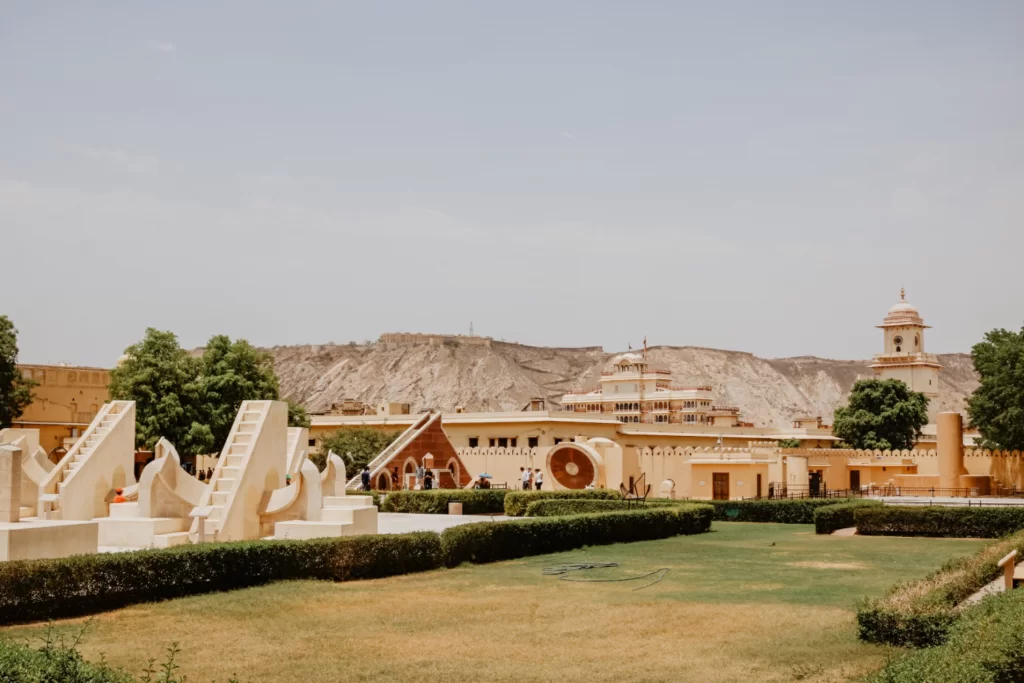
This picture is taken from unsplash.com
How are you unaware of Jaipur’s Jantar Mantar? It is both the biggest astronomical observatory in the world and one of India’s most significant historical sites. As a huge fan of science, Raja Sawai Madho Singh constructed the location in the 18th century. The instruments in the observatory are set up such that they can tell you the positions of celestial bodies.
The biggest sundial in the entire globe may be found at Jantar Mantar.
Entrance Fee: For students, INR 15, and for immigrants, INR 200
Open from nine to four thirty
Must see Sound & Lighting Show
Maharaja Sawai Jai Singh II constructed it in 1735.
34. Golkonda Fort, Hyderabad
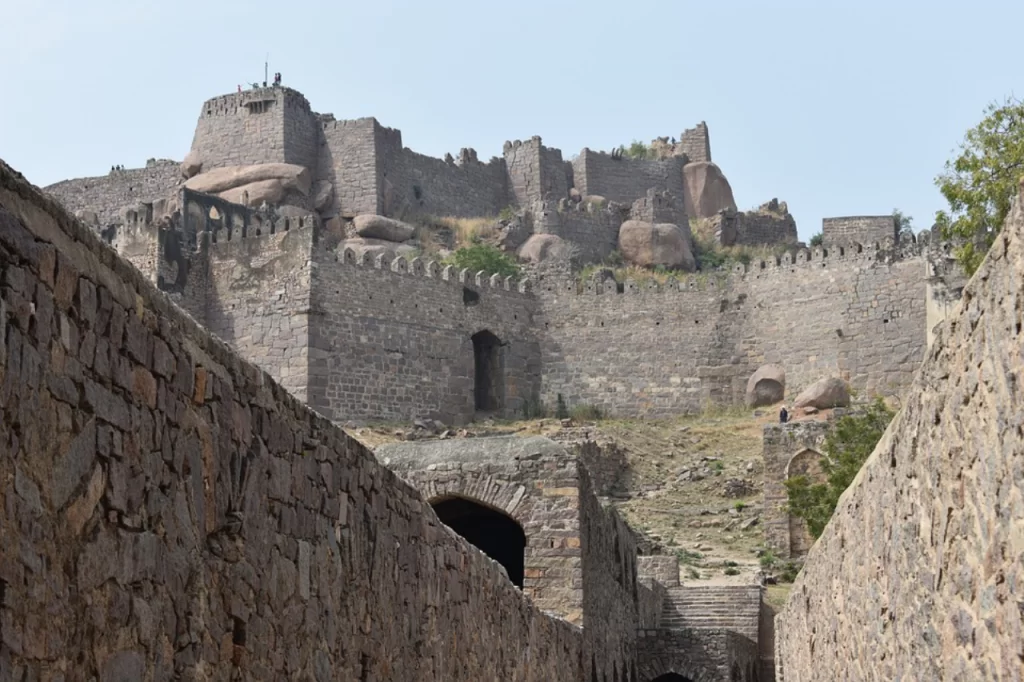
This picture is taken from pixabay.com
The Golkonda Fort, a landmark in Hyderabad, was constructed to defend the city from an attack by an outside army. Also, it was where the enormous Kohinoor diamond was set. This fort is alluring because of its enormous construction, mysterious history, and mystique. When visiting Hyderabad, you must unquestionably include this destination on your agenda.
Interesting fact: The top of the fort can hear you clap your hands at the base.
Entrance Fee: 5 INR; 100 INR for overseas visitors
8 am to 5:30 pm, daily
A light and sound show is a must-see.
Sultan Quli Qutb-ul-Mulk constructed it.
35. Bara Imambara, Lucknow
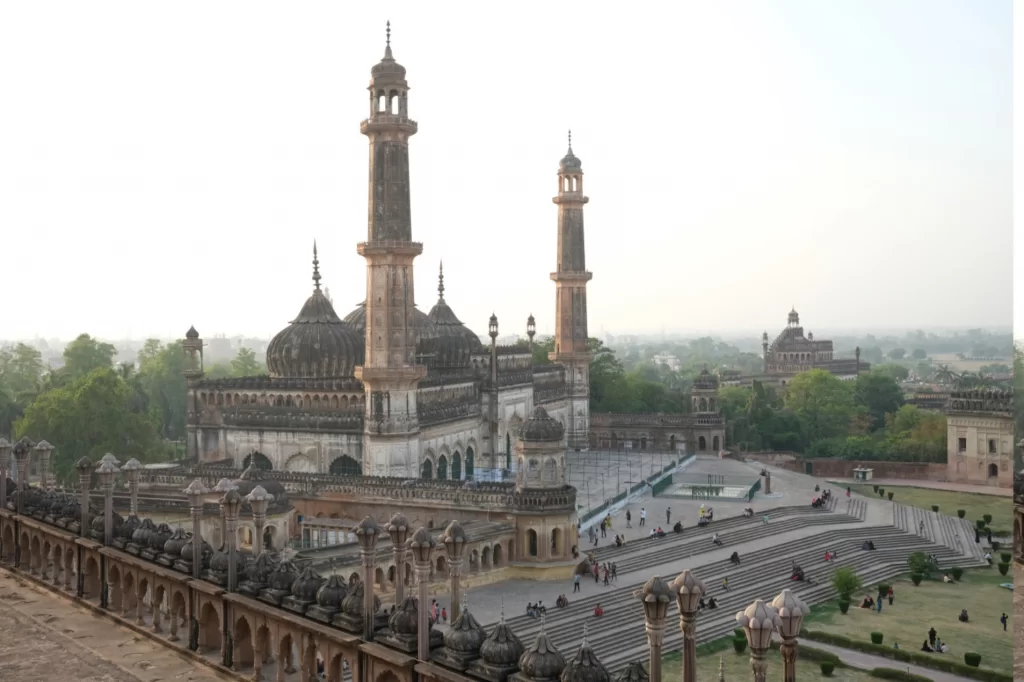
This picture is taken from unsplash.com
Bara Imambara, one of India’s most important historical sites, is situated in the “City of Nawabs” and is renowned for its architectural skill. The largest structure in the world that isn’t supported by beams is this one. Asif Imambara built it to serve as a significant Muslim house of worship. Even better, inside the building is a fantastic Bhool Bhulaiya maze.
Interesting fact: There are 1024 ways to enter the maze, but there are only two
Entry fees: INR 25 for Indians and INR 500 for outsiders.
Open from 6 a.m. to 5 p.m.
A must-see Nawab Asaf-Ud-burial Dowlah’s and his crown
Nawab Asaf-Ud-Daula constructed it.
36. Meenakshi Amman Temple, Madurai
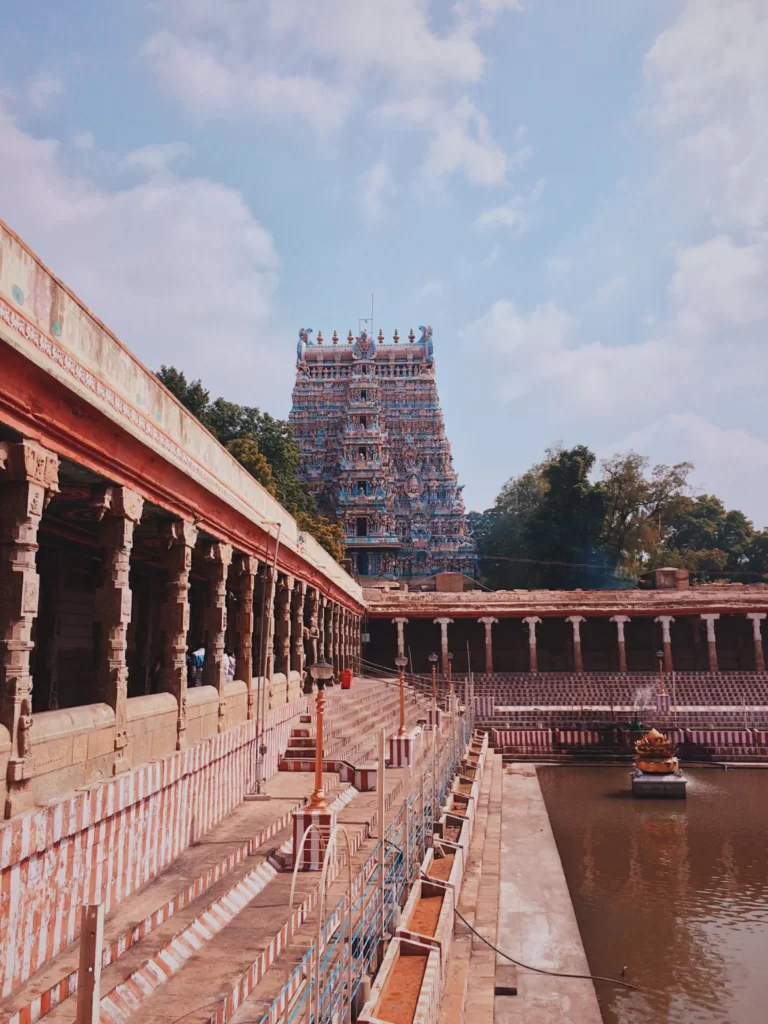
This picture is taken from unsplash.com
The southern bank of the Vaigai River in Madurai is home to a revered Hindu temple with a long history. This gorgeous temple is all about pure spirituality, positive thinking, and good vibrations. It is dedicated to Shiva, the husband of Meenakshi, Parvati. See the tremendous grandeur of this temple and be in awe of the majestic building with detailed sculptures. One of the most well-known locations in India is this.
The complex architecture of the location is one of the seven wonders of the world.
No entry charge is required.
Open nine to seven daily
The 14 temple entrances and the pillars are must-sees.
Designed by: Kulasekara Pandya King
37. Halebidu, Karnataka
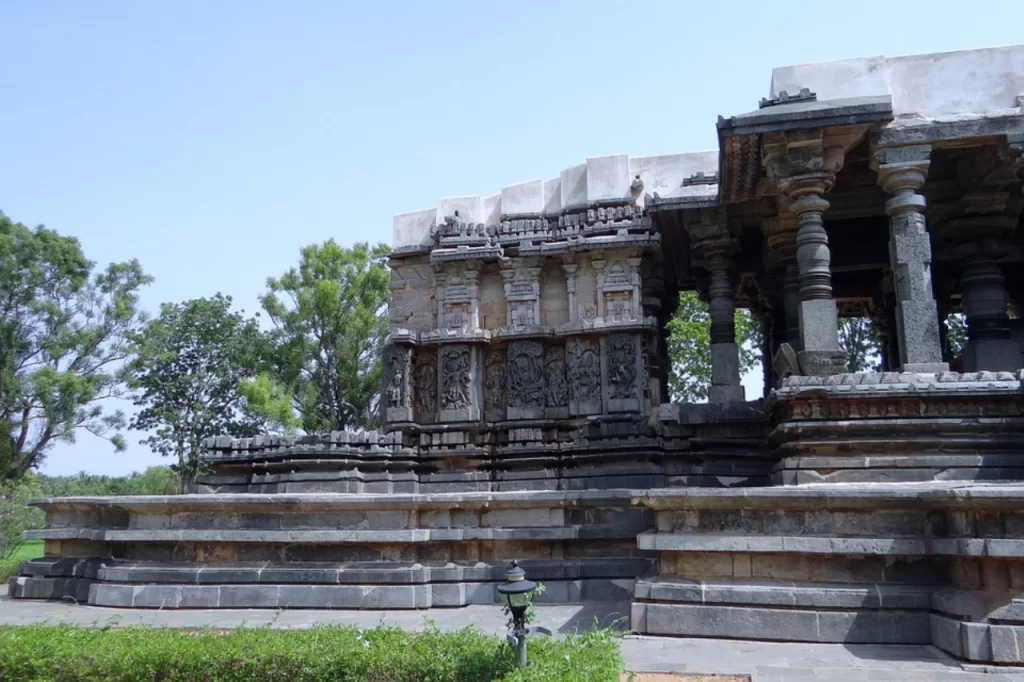
This picture is taken from pixabay.com
It is a group of magnificent temples with a glorious past that are situated in the Hassan district of Karnataka and are also referred to as the hidden pearl of Indian architecture. Halebidu is a great choice if you want to explore some historical sites in India. It contains a stunning temple complex with Hoysala-style architecture. Also, it contains a number of Jain temples and other noteworthy buildings that will inspire a sense of spirituality in you.
In the 12th century, it served as the Hoysala Empire’s imperial capital.
There is no entry fee.
From 10:00 am to 5:00 pm
Must visit: the museum of archaeology
Built By: King Vishnuvardhana
38. Chittorgarh Fort, Rajasthan
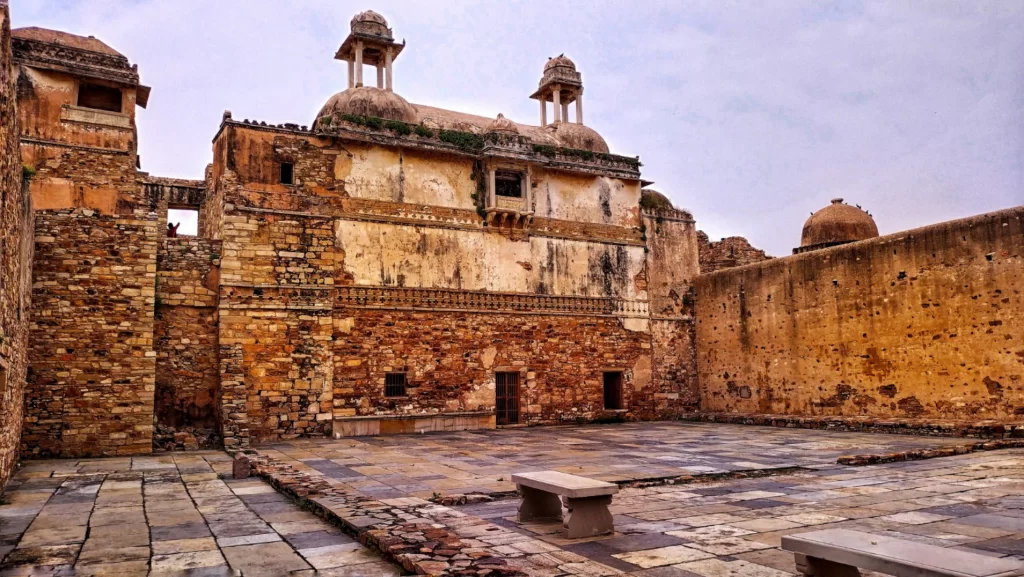
This picture is taken from unsplash.com
Chittorgarh, the capital of the Mewar Empire, contains a spectacular attraction known as the Chittorgarh Fort, one of the largest forts and historical sites in all of India. This beautiful Fort stands tall and is a monument to the Mewar kings’ illustrious past and unsurpassed beauty. The 700-acre fort is known for its epic fights, particularly those fought during the Alauddin khilji and Rani Padmini’s selfless Jauhar.
Interesting fact: Rani Padmini performed the renowned act of self-sacrifice known as the Jauhar there in order to prevent Alauddin Khilji from capturing the fort.
No entry charge is required.
Open from 4:00 AM until 10:00 PM
Rani Padmini Palace is a must-see.
Construction: Chitrangad Mori
39. Nalanda University, Bihar
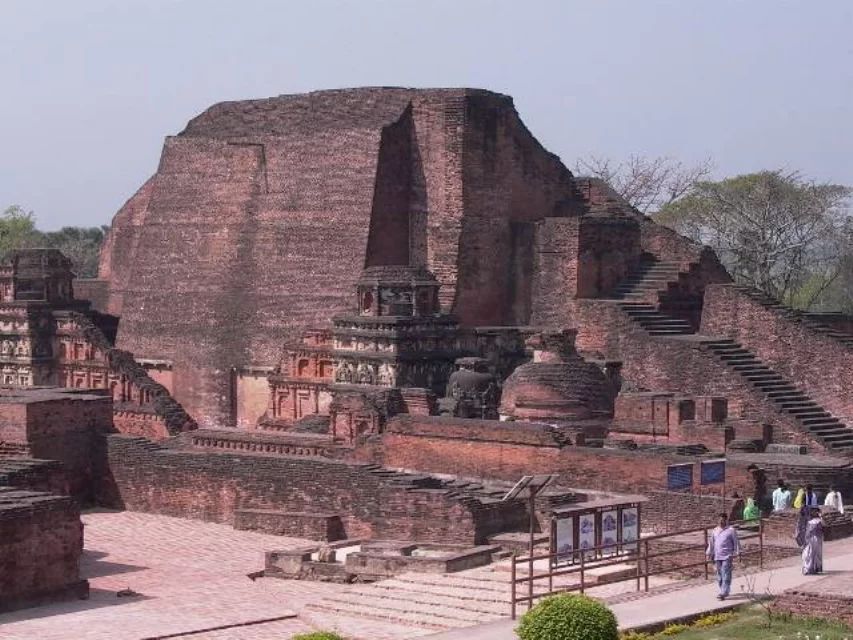
This picture is downloaded from facebook.com
The most well-known Mahavihara of the past, it is an important Buddhist center of learning and a modest pilgrim center. At this one of the most alluring historical locations in India, look for spirituality, positive vibes, positivism, peace, and tranquillity
Interesting fact: The University’s library was so large that it took more than 5 months for it to entirely burn down during the Muslim siege.
Entrance Fee: 15 INR for inhabitants of India, the SAARC, and the BIMSTEC
For foreigners, INR 200
Children under the age of 15 are admitted for free; a video camera costs INR 25.
Open daily from 9 to 5 p.m.
A museum housing a collection of bronzes, coins, and relics is a must-see.
Construction: Gupta Dynasty
40. Churches & Convents, Old Goa
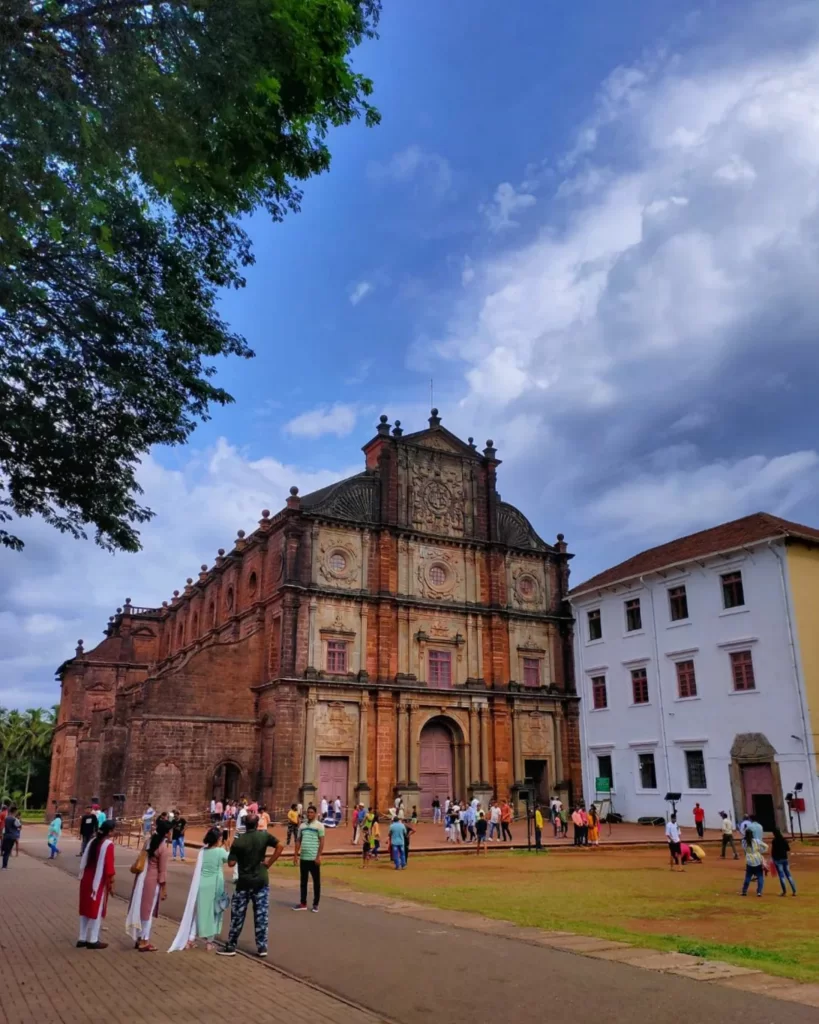
This picture is downloaded from facebook.com
This region of Goa, which is a component of the UNESCO World Heritage Site, bears witness to the Portuguese influence through the architecture of various convents and churches that were constructed in Goa as part of the introduction of Christianity to India. One of India’s most stunning historical sites is the cathedrals and convents of Goa.
Interesting fact: Goa served as the center of Portuguese control in India, and this is a legacy of the Portuguese people.
There is no entry fee.
Opening hours are 7:30 am to 8:30 pm.
Must See: Basilica Of Bom Jesus Portuguese-built
Constructed in the 16th century
41. Orchha Fort, Madhya Pradesh
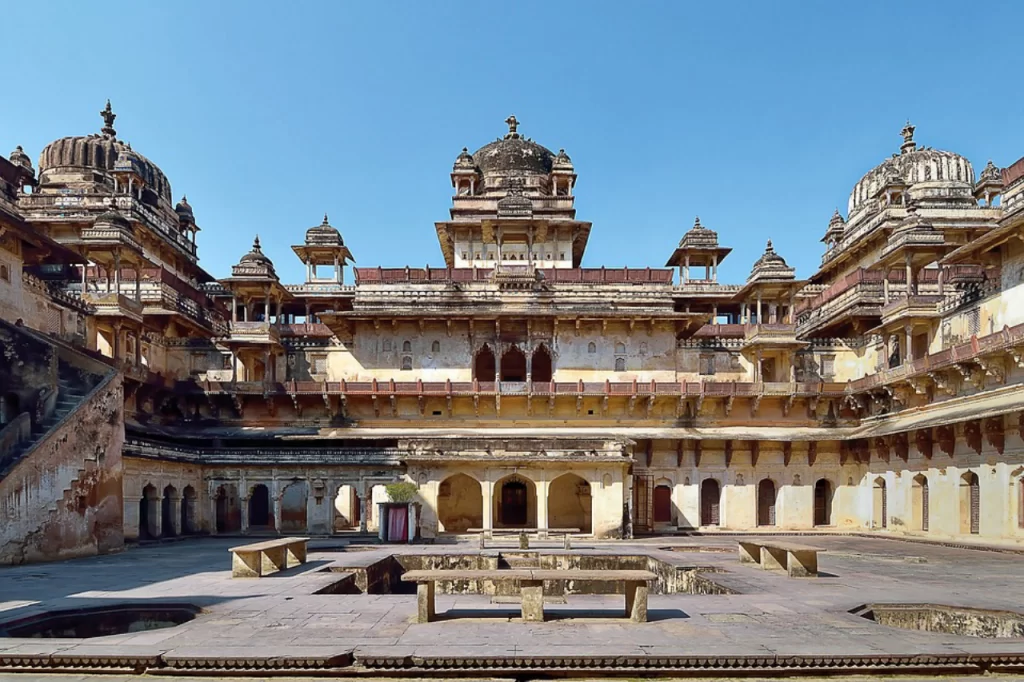
This picture is downloaded from pixabay.com
The Orchha Fort Complex is a sizable archaeological site with a number of medieval structures, including palaces and temples. It is one of the best historical locations in India and is situated in Orchha Town, Madhya Pradesh. Raja Mahal, Jahangir Mahal, and Sheesh Mahal are the names of the palaces. In addition to these, the Orchha Fort contains a temple and a garden called Phool Bagh.
Interesting Fact: The Ram Raja Temple in Orchha is the only temple where Lord Ram is revered as both a Deity and a king. It is a well-known historic temple.
Entrance Fee: 10 INR (Extra charges for a camera)
Open daily from 9 to 6 p.m.
Raja Mahal, Jahangir Mahal, and Sheesh Mahal are must-sees.
Created by: King Rudra Pratap Singh
42. Bhimbetka Rock Shelters, Madhya Pradesh
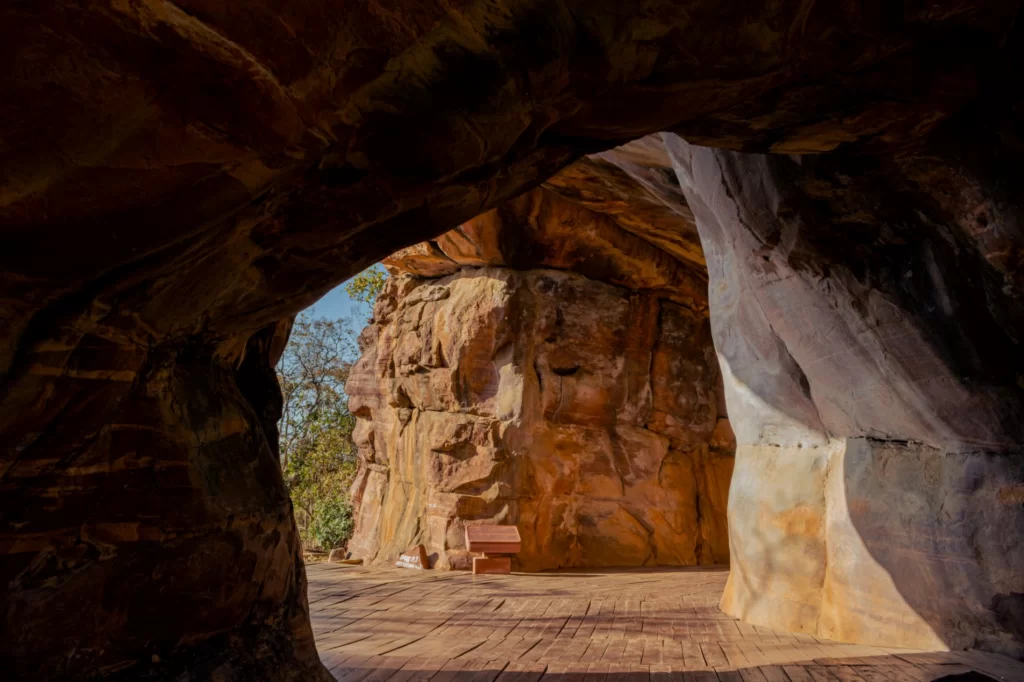
This picture is downloaded from unsplash.com
The prehistoric archaeological site known as Bhimbetka Rock Shelters in Madhya Pradesh is one of the most well-known places in India. Ancient cave paintings serve as a technique of preservation for Stone Age items. The paintings are thought to be about 30,000 years old. In 2003, Bhimbetka received the UNESCO World Heritage Site designation. Due to the approximately 500 caves and rock shelters that are situated there, it ranks as one of India’s top historical sites.
Interesting fact: Although the Bhimbetka Caves have been around for a while, they were only uncovered in 1957.
Entrance Fee: 10 INR
6:30 a.m. to 5:30 p.m.
See these cave paintings!
Early humans constructed it.
43. Champaner Pavagadh Archaeological Park
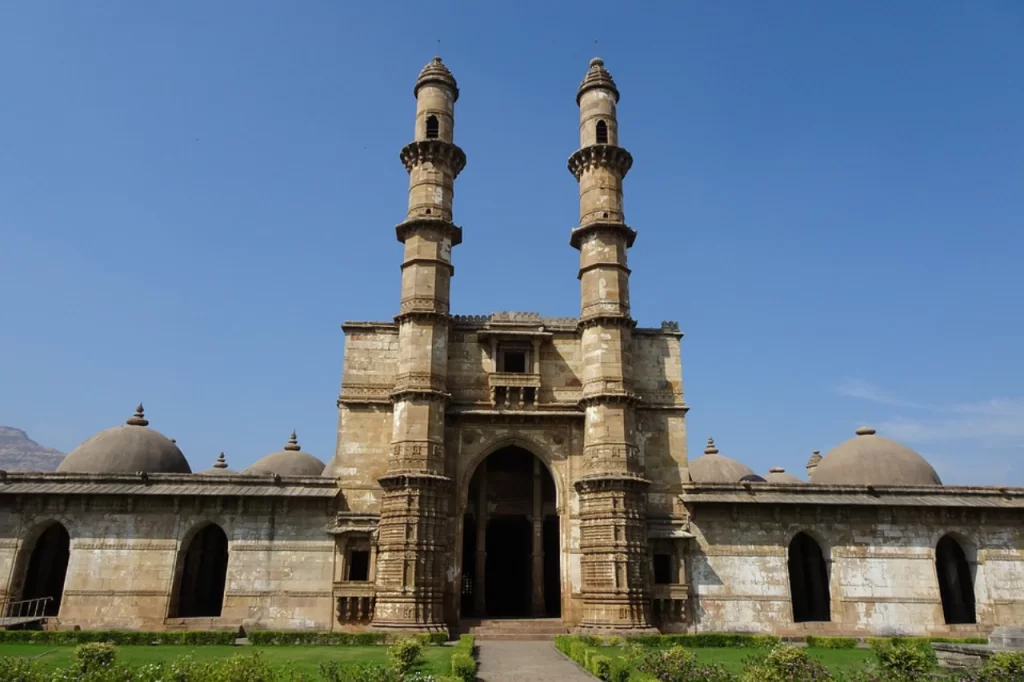
This picture is downloaded from pixabay.com
Champaner Pavagadh Archaeological Park, located in Gujarat, has earned a spot on the list of UNESCO World Heritage. This Archaeological Park, which is located in the center of Champaner and is encircled by the Pavagadh Hills, is one of India’s most stunning historical locations and also has mythological significance. There are numerous architectural wonders that both display the Hindu and Islamic design aesthetics.
Fascinating fact: According to the well-known Hindu epic Ramayana, Lord Hanuman is said to have transported a portion of the Himalayas to Lanka, which is thought to be the Pavagadh hill.
Entry Fee: INR 10 per individual
Open: 7:30 a.m. to 5:00 p.m.
Must View: The Hindu and Islamic Architectural Styles Constructed by Vanraj Chavda
Constructed in the eighth century A.D.
………………………………………………………………………………………………………..
Go out to discover the different historically significant locations in India that are rich in culture. Explore this amazing nation’s diversity and exquisite architectural splendor. These monuments all exhibit artistic prowess at their highest, from elaborately decorated windows to large sculptured inscriptions. Spend your vacation in India exploring the vibrant Indian heritage and getting immersed in the ancient world of historic sites.
Frequently Asked Questions about Famous Historical Places in India
Q: Which is the most historical place in India?
Taj Mahal, Agra. One of the most famous historical sites in India, the Taj Mahal of Agra dates back to the 17th century.
Agra Fort, UP.
Delhi’s Red Fort.
Qutub Minar, Delhi.
Uttar Pradesh’s Fatehpur Sikri
Hawa Mahal, Jaipur.
Memorial to Victoria.
Humayun’s Tomb, Delhi.
Q: Which are famous historical places in North India?
Three of North India’s most well-known historical sites are Jaipur, Agra, and Delhi; in fact, these three together make up the well-liked Golden Triangle tour route.
Q: What are the top historical places in India?
Red Fort, Delhi.
Khajuraho Temples, Madhya Pradesh.
Taj Mahal, Agra.
Hampi, Karnataka.
Qutub Minar, Delhi.
Fatehpur Sikri, Uttar Pradesh.
Hawa Mahal, Jaipur.
Konark Sun Temple, Odisha.
Q: Which is the unique place in India?
Unique locations in India include Dhanushkodi Beach, Magnetic Hill, Lonar Crater, Loktak Lake, and the Reversing waterfall of Naneghat should be visited at least once in a lifetime.
Q: What is the most famous landmark in India?
Not only is the Taj Mahal one of India’s most amazing landmarks, but it is also a legitimate World Wonder and a popular travel destination. This white marble mausoleum, which was constructed to honor Shah Johan’s loving wife, Mumtaz Mahal, is just as stunning in person as you might anticipate.
Q: What is India famous for?
India is well-known for a wide variety of things, including its cuisine, culture, population, languages, natural landscapes, traditional dances, Bollywood or the Hindi film industry, the origin of yoga, spirituality, and natural beauty.
Please visit for more historical places: Poha Talks


